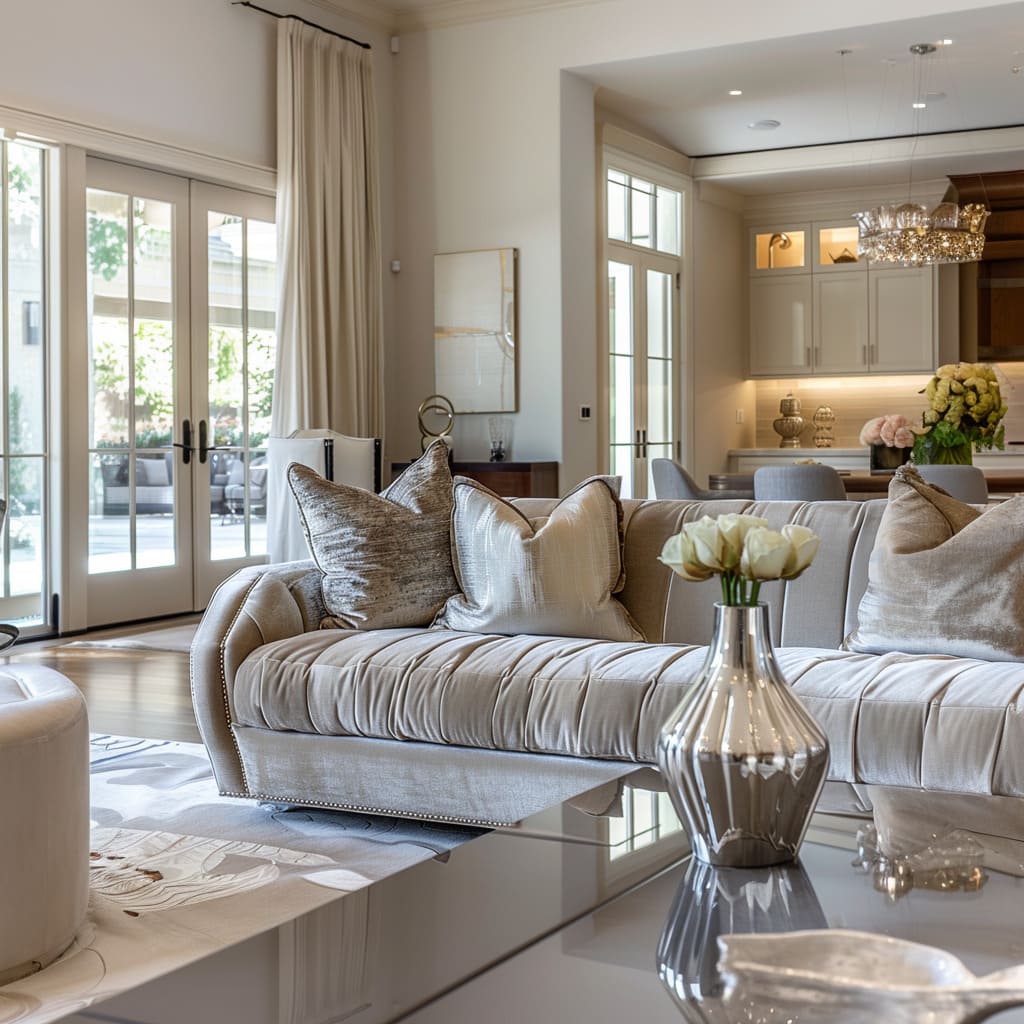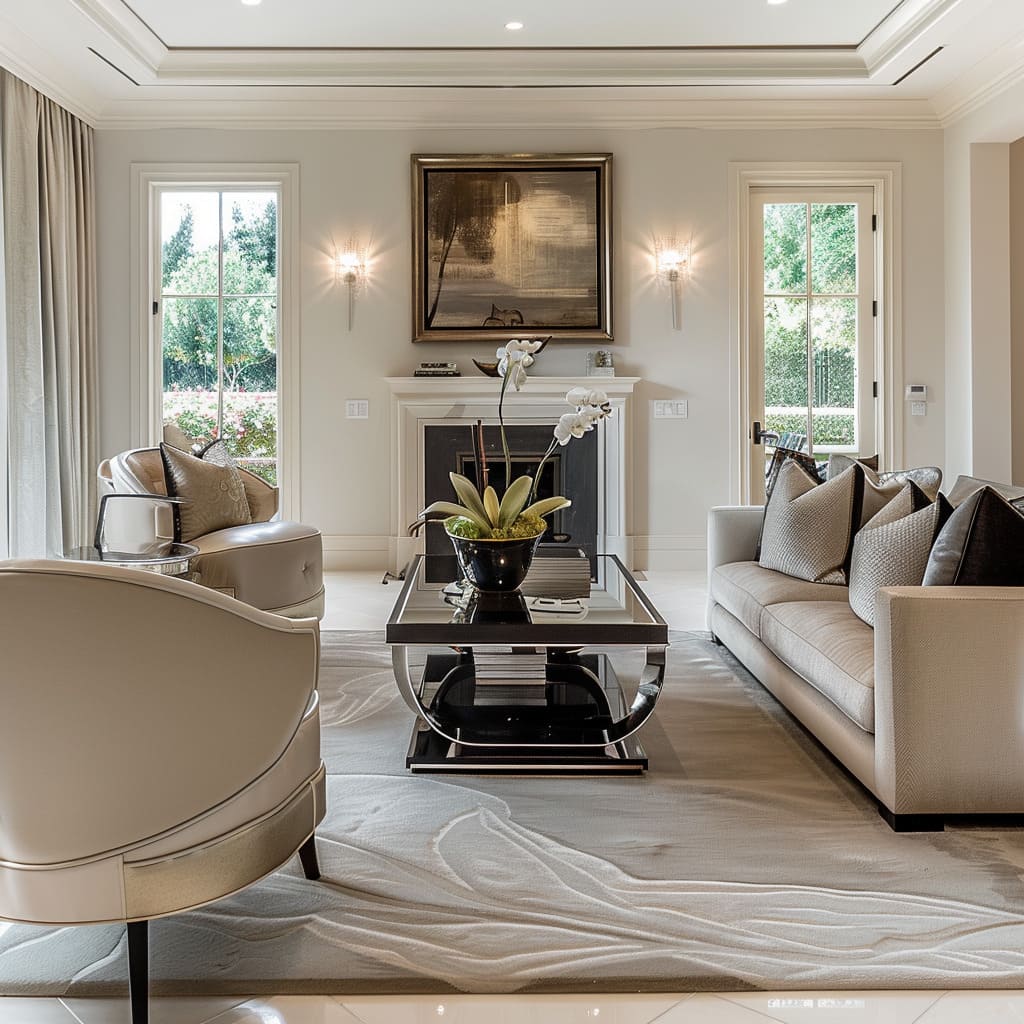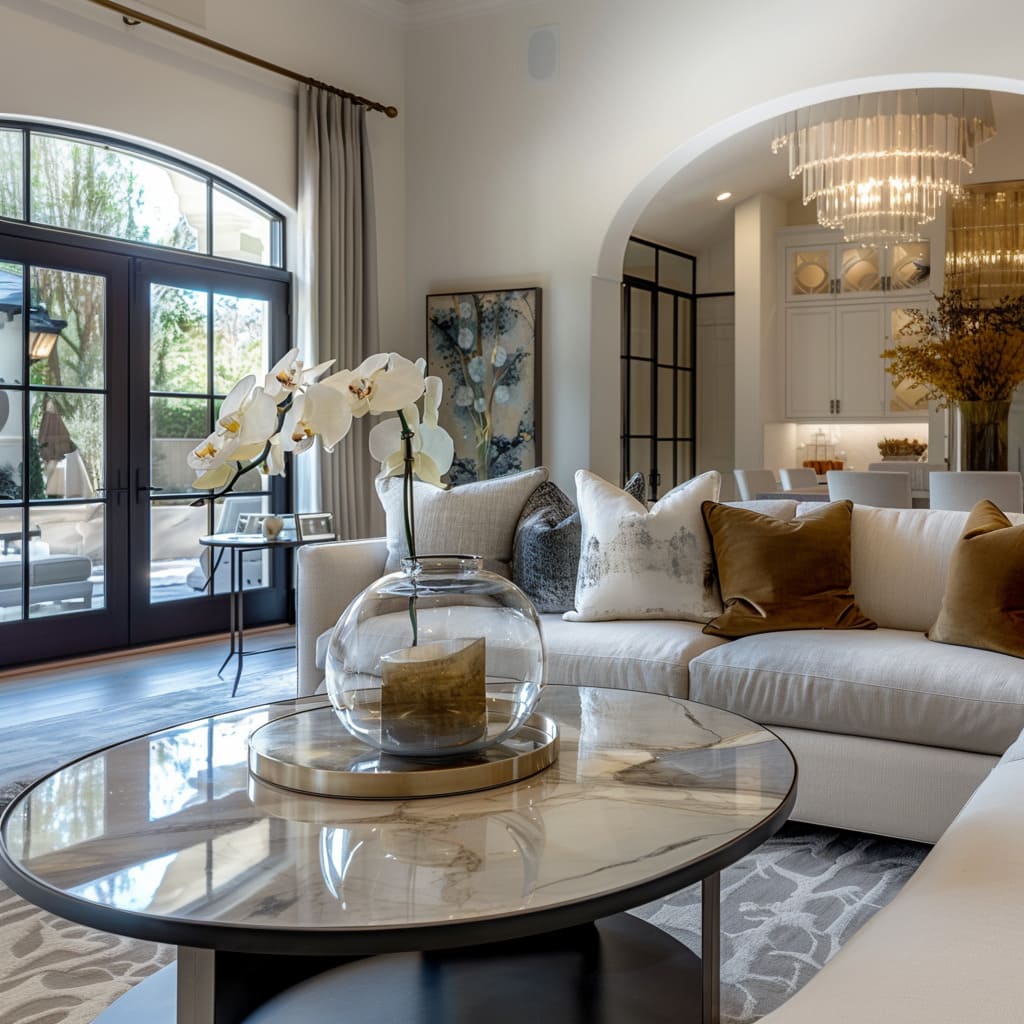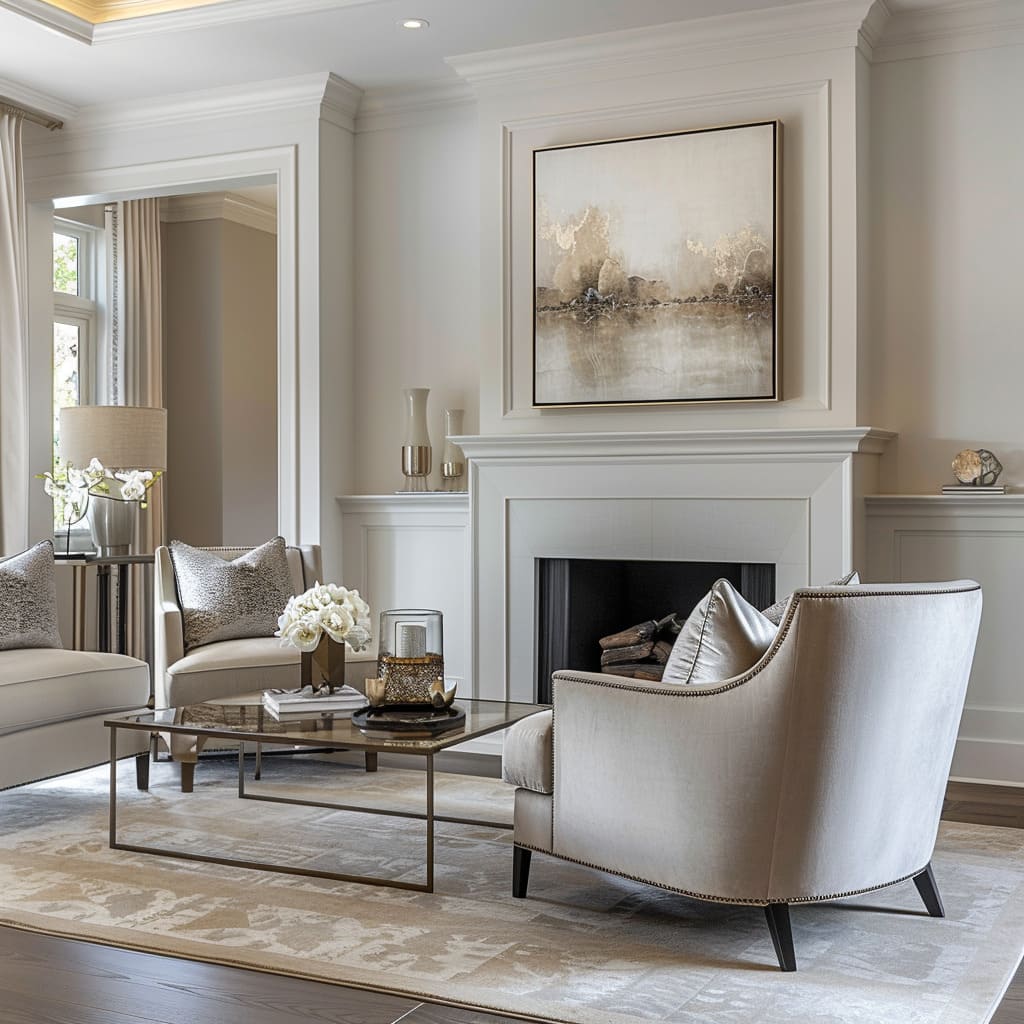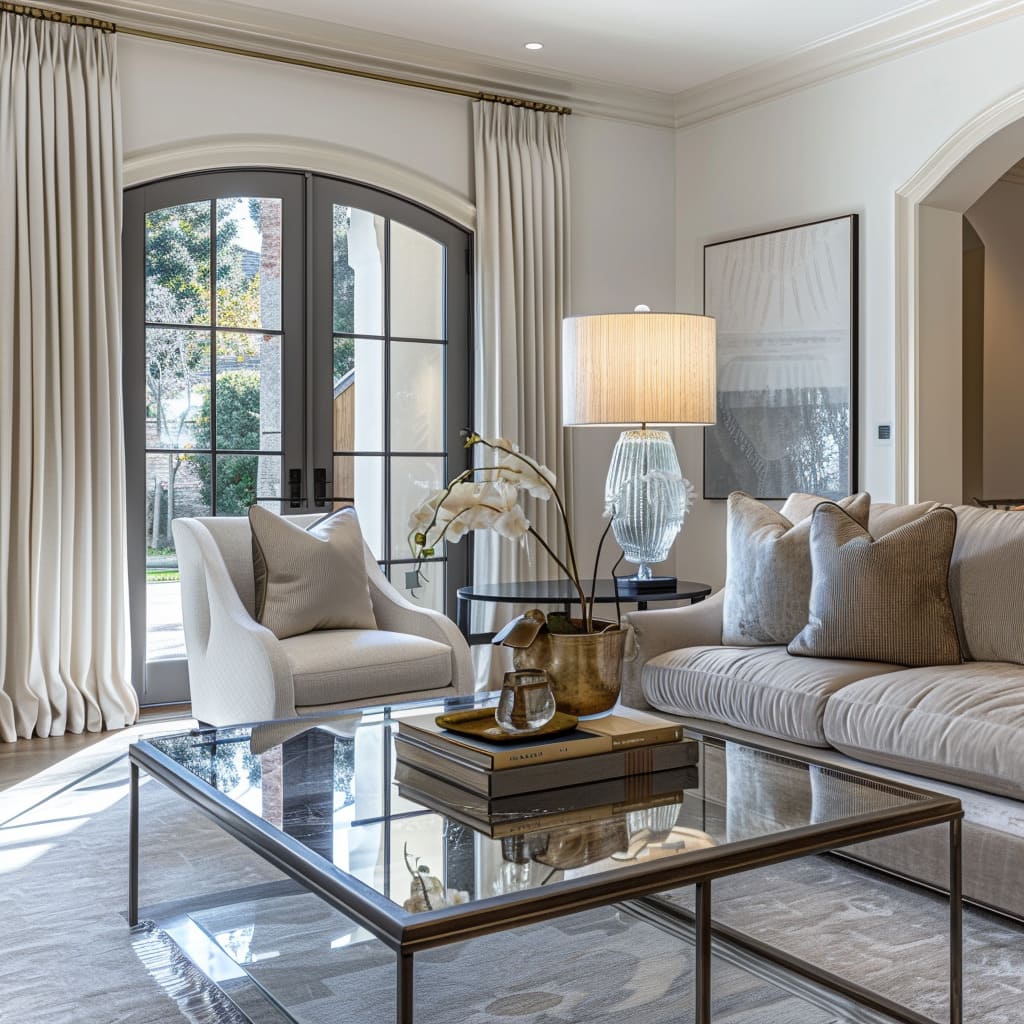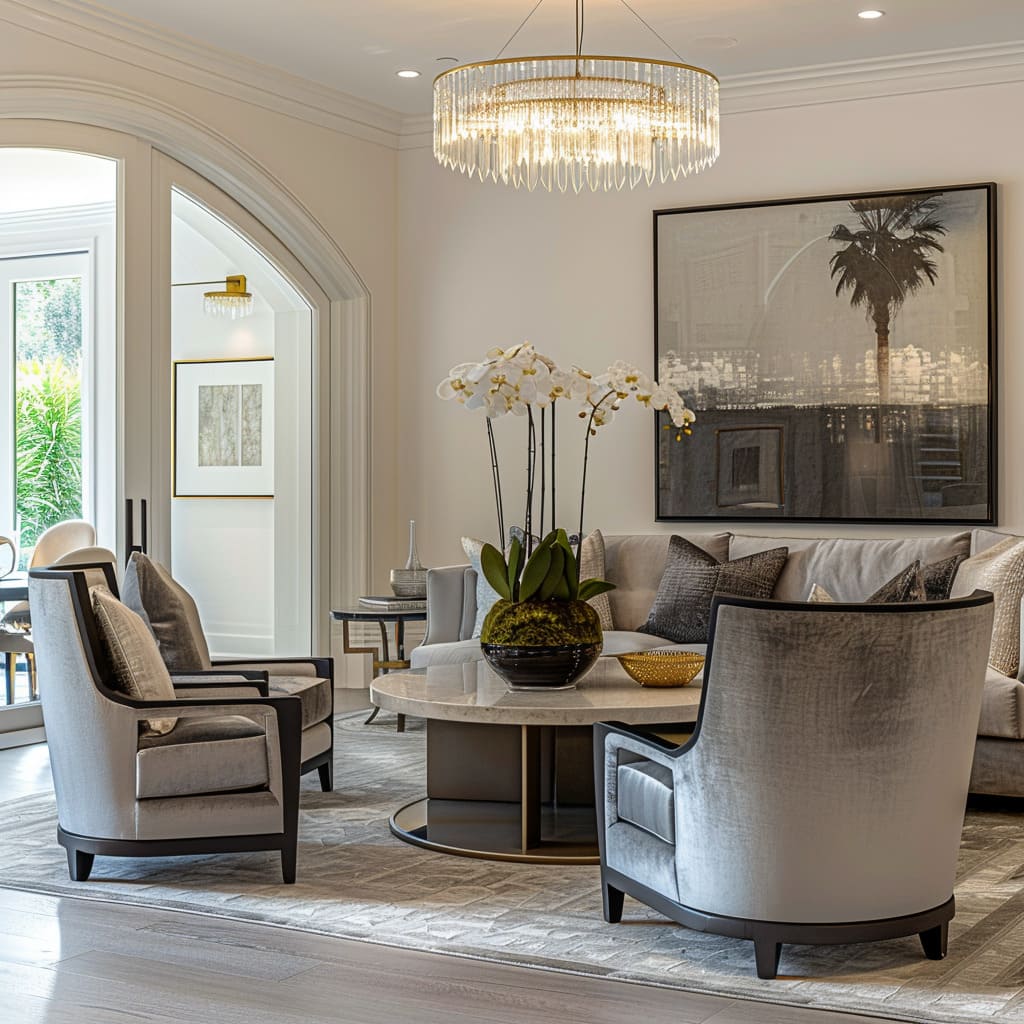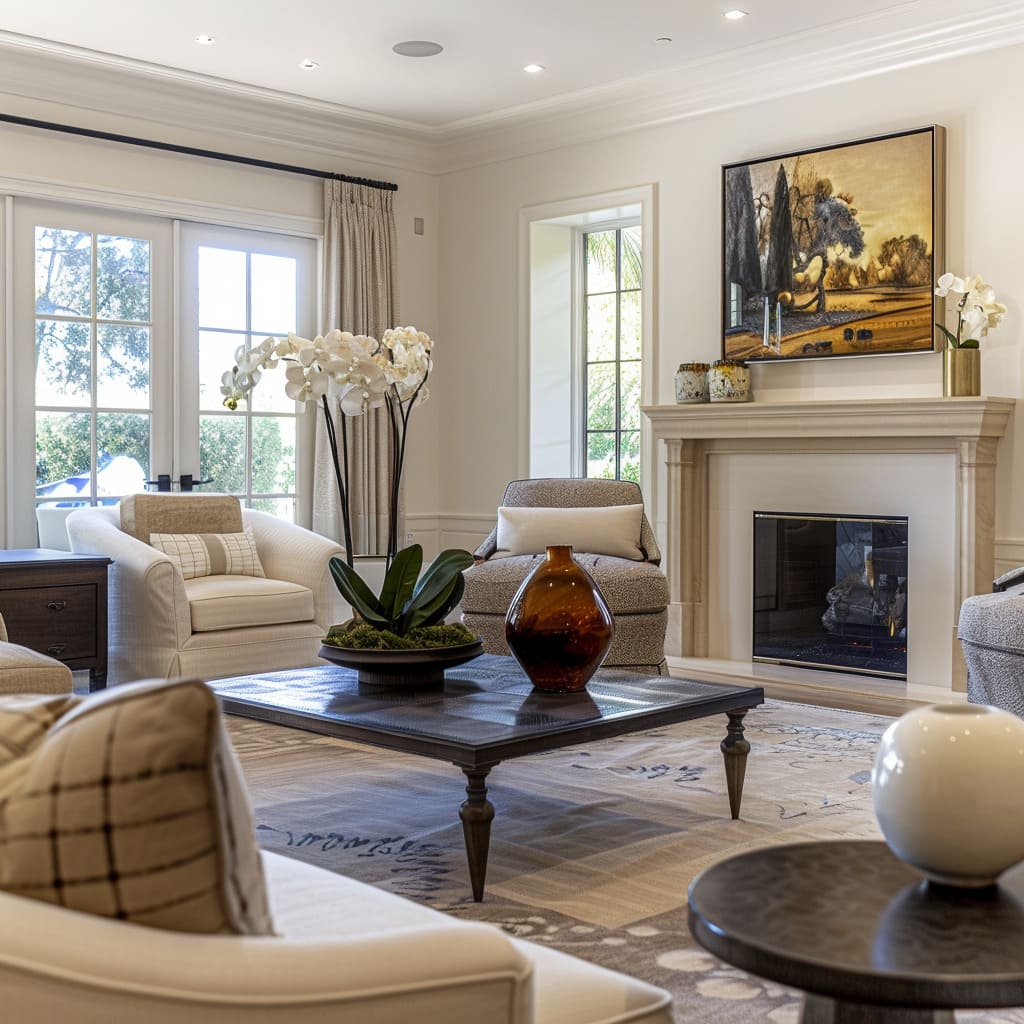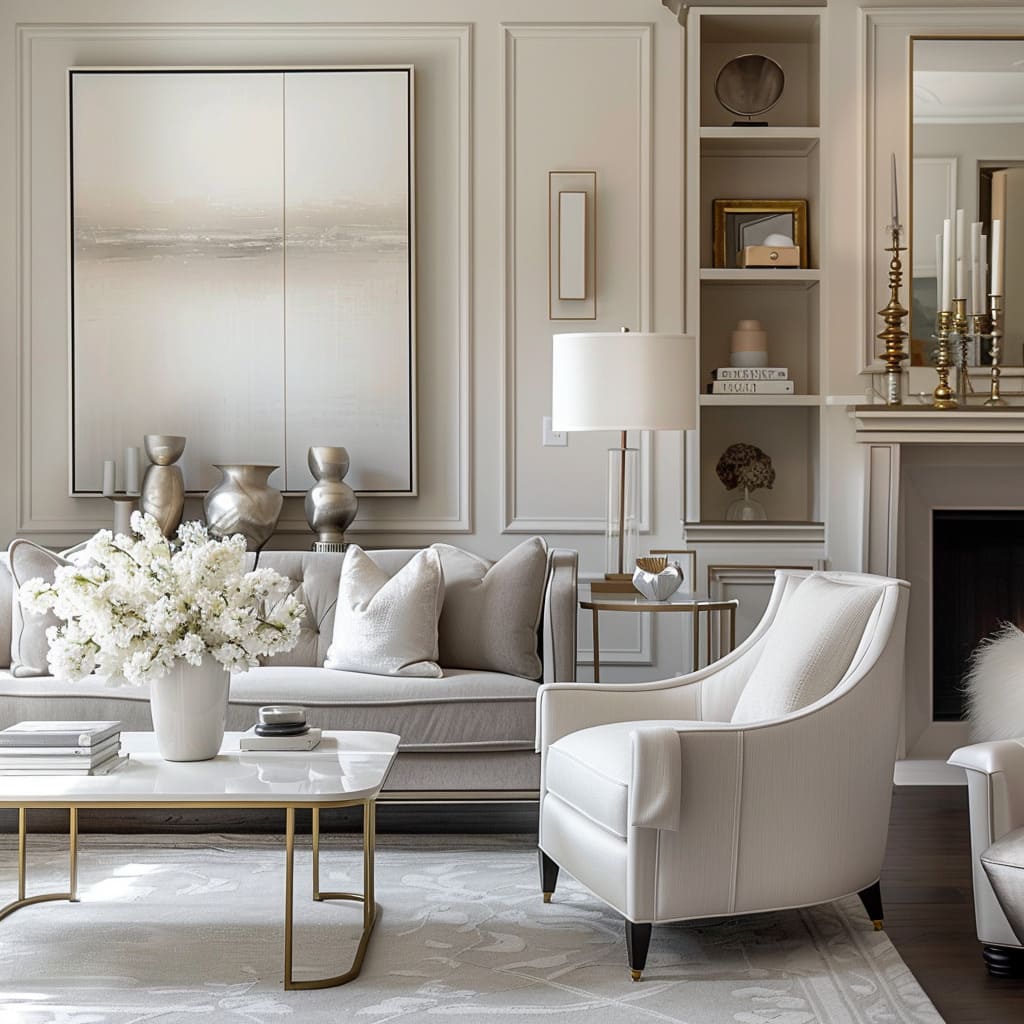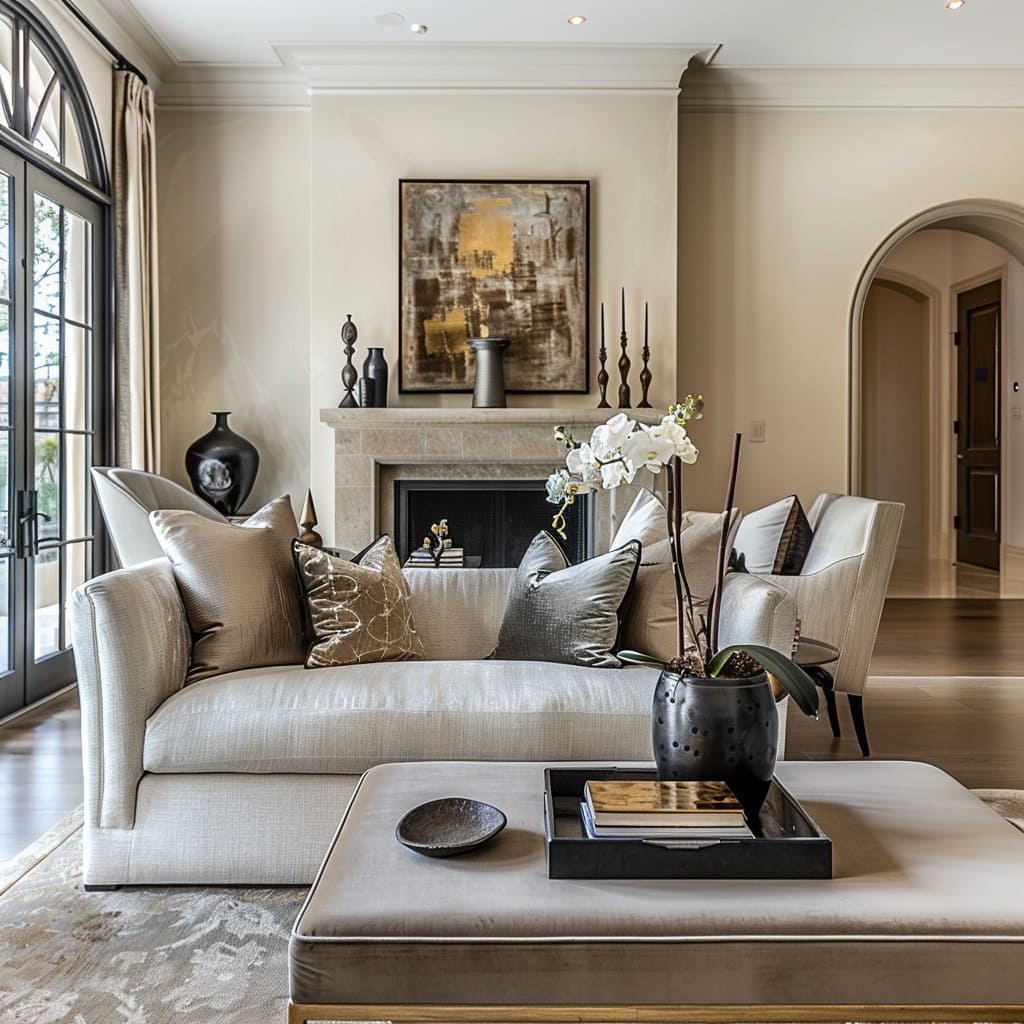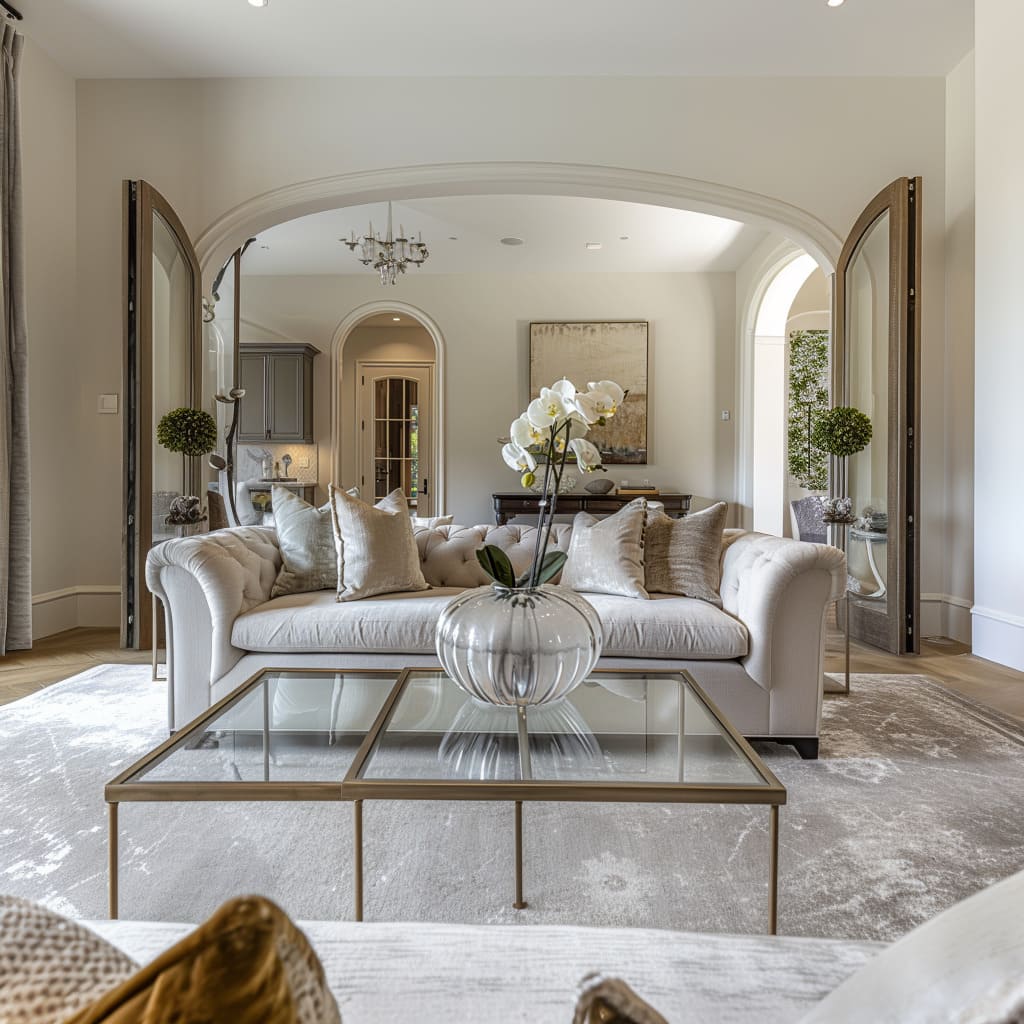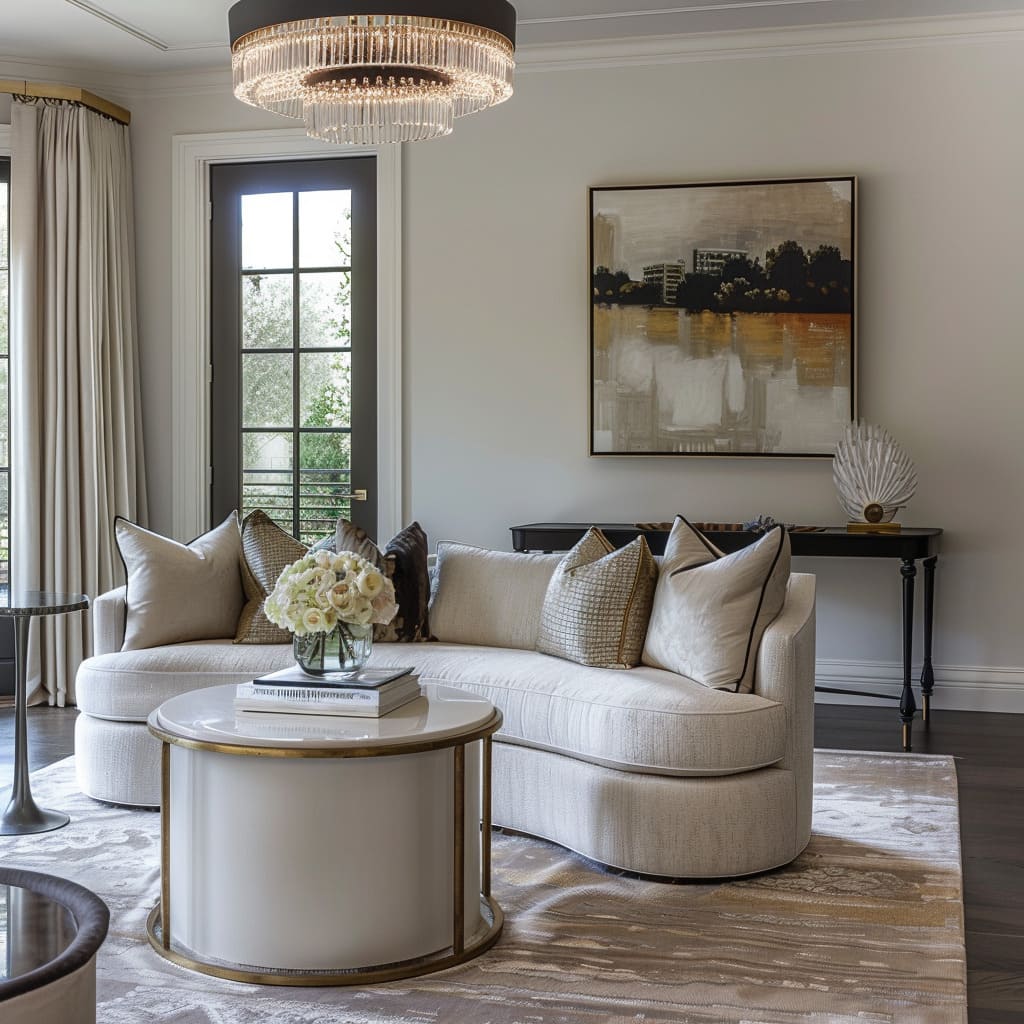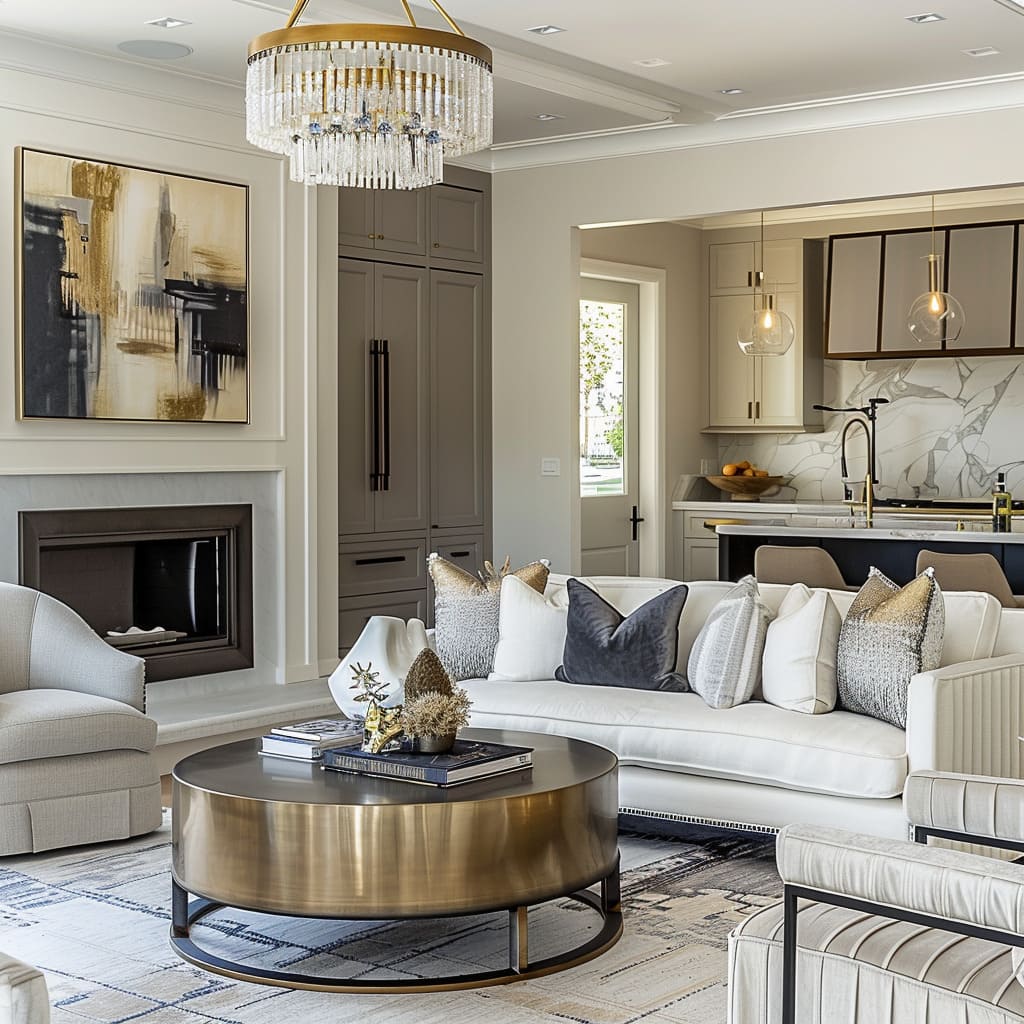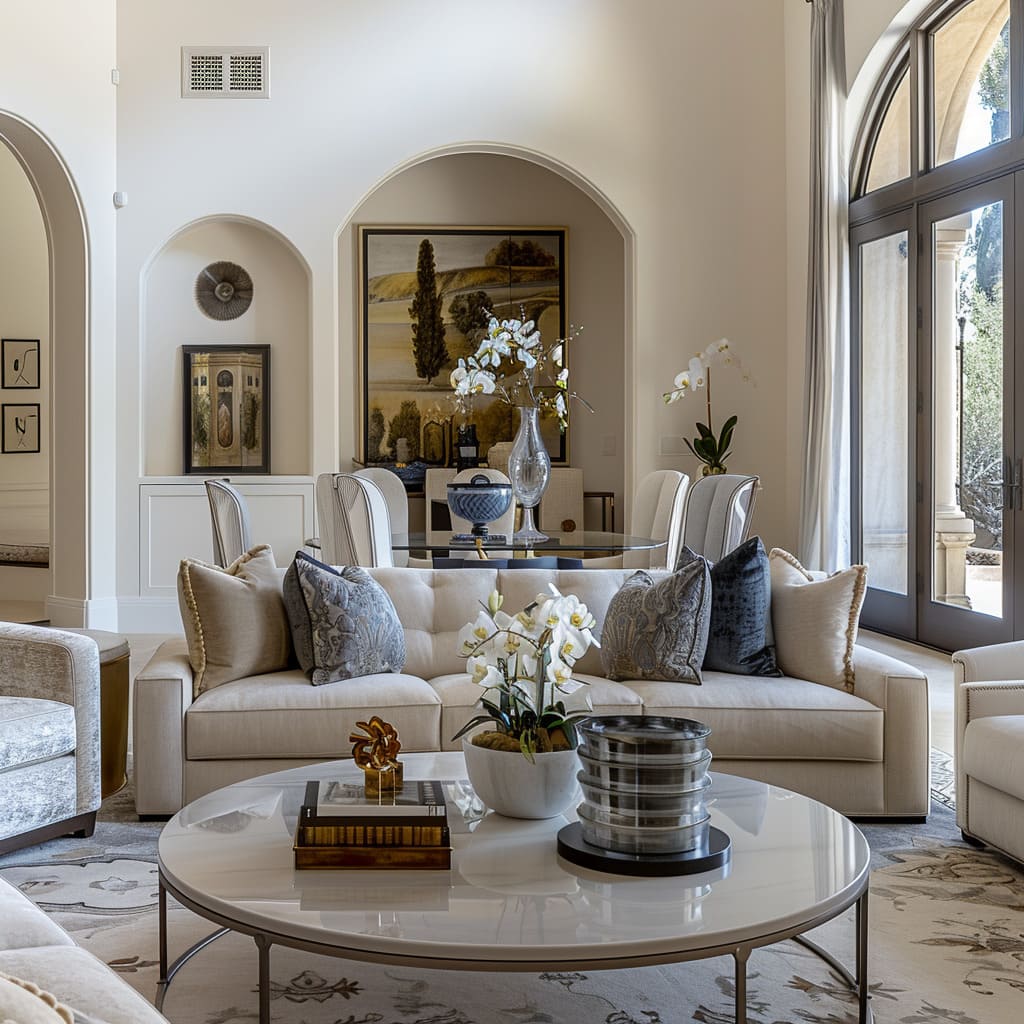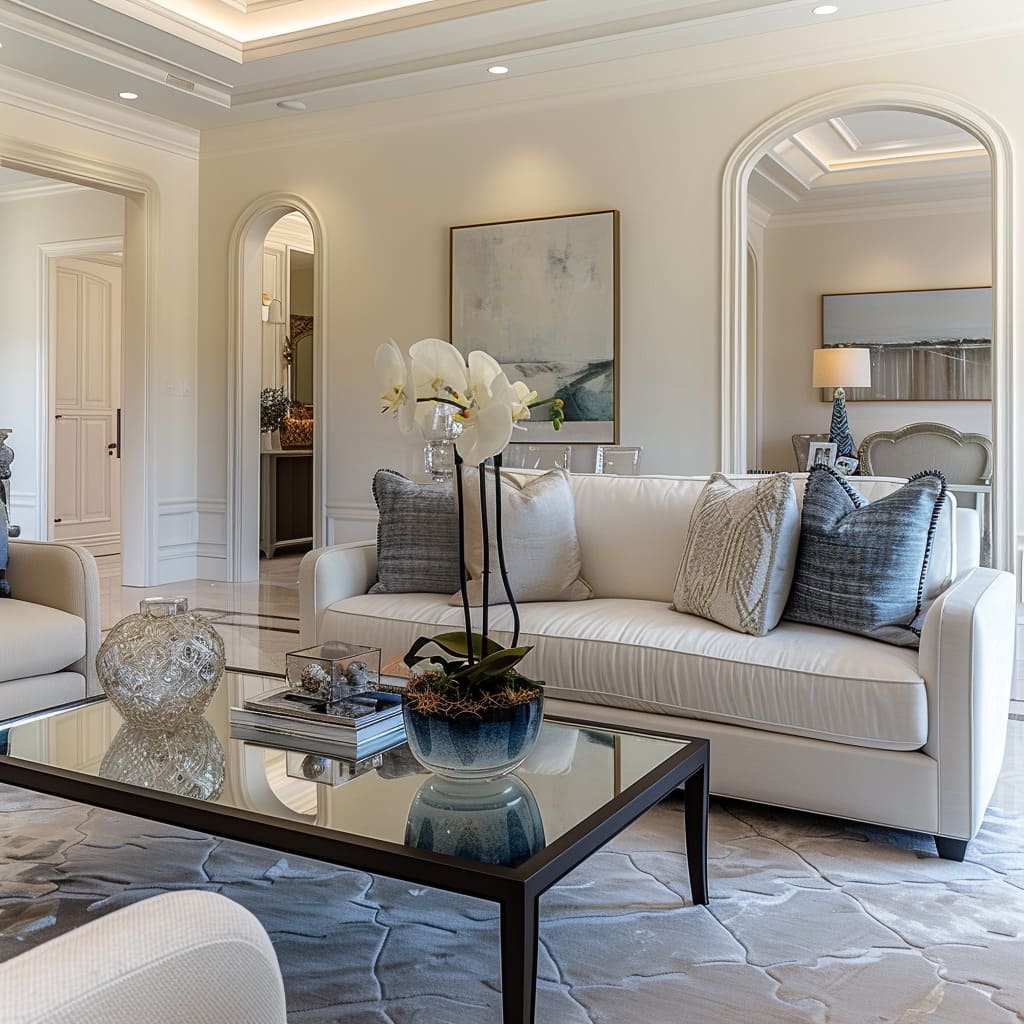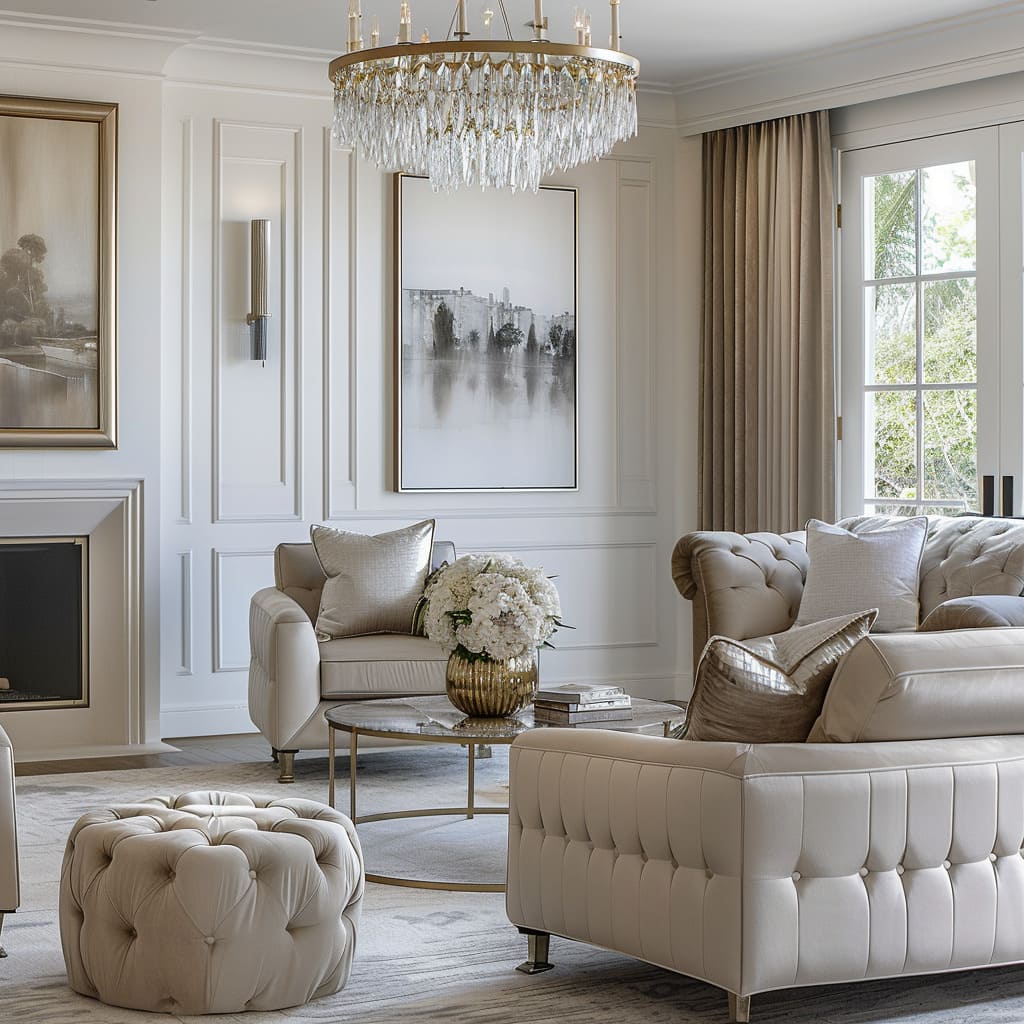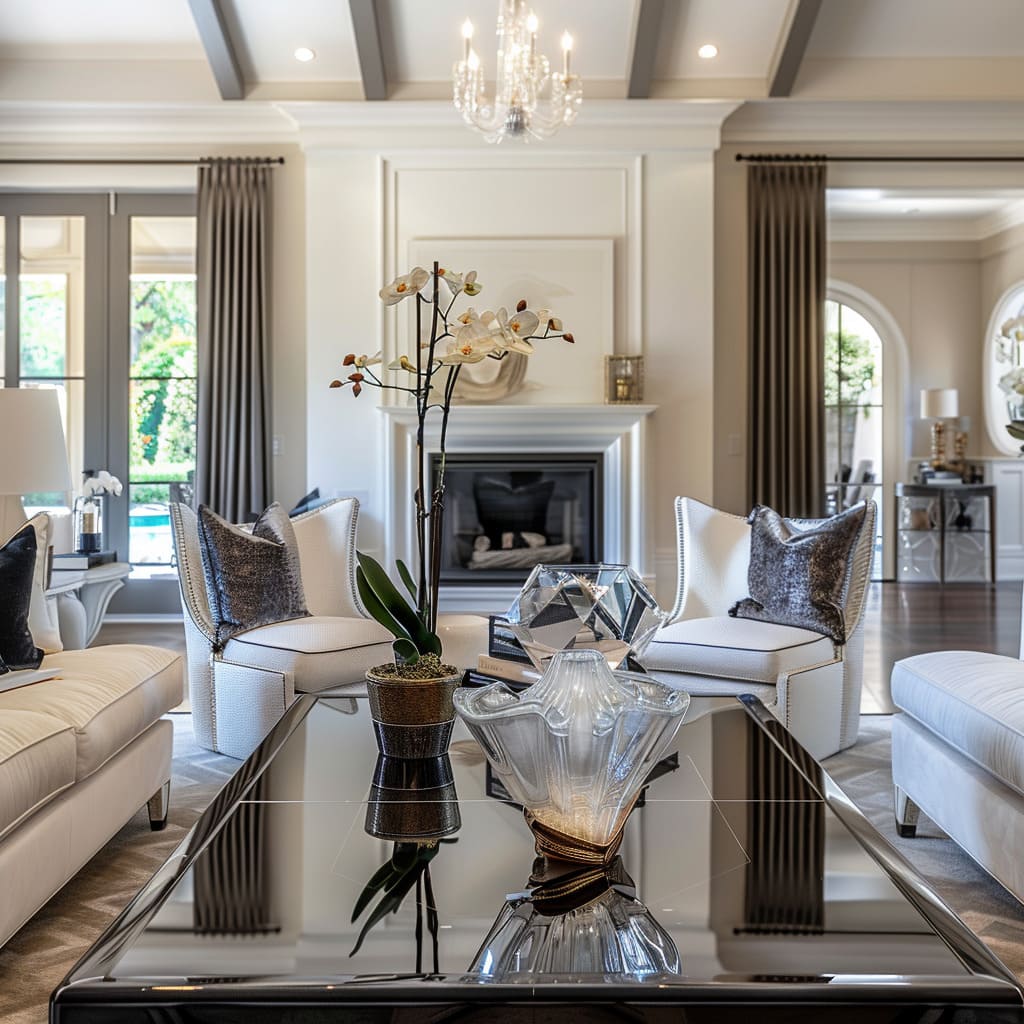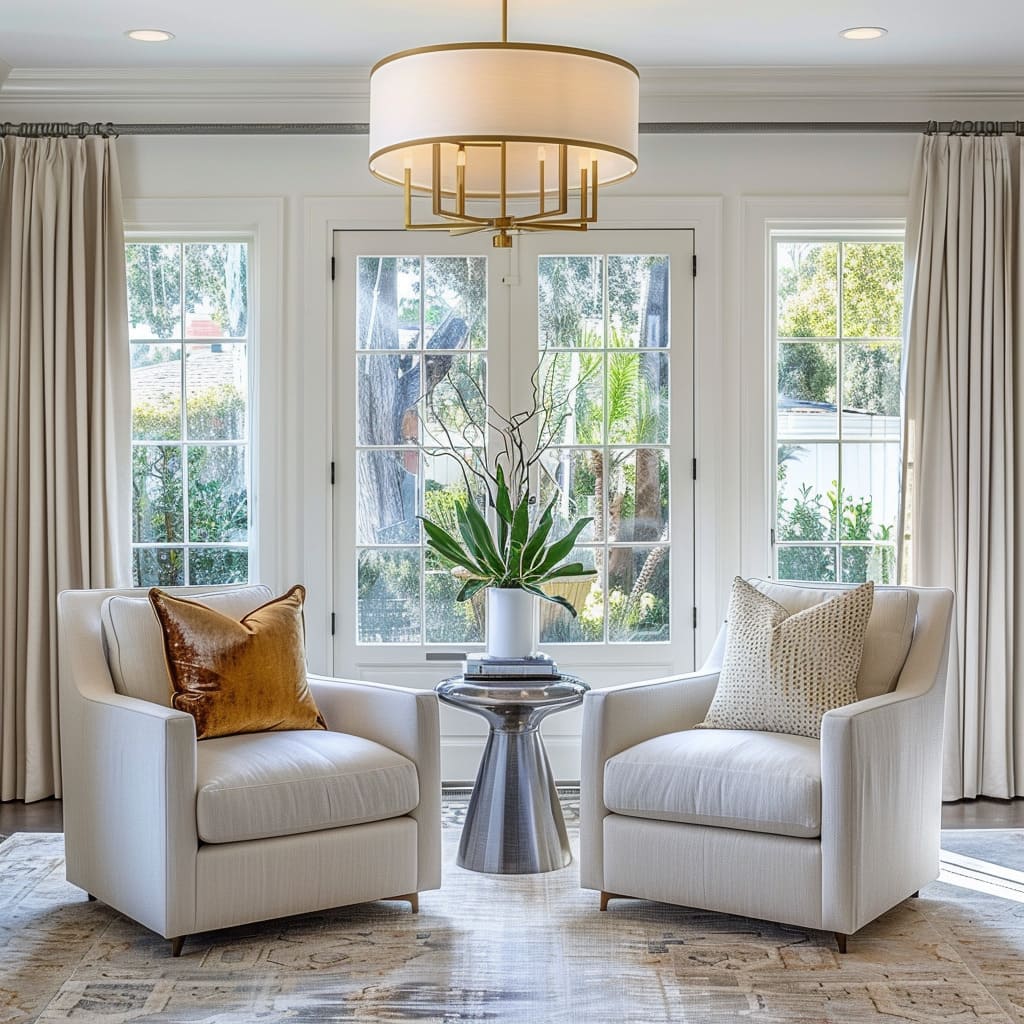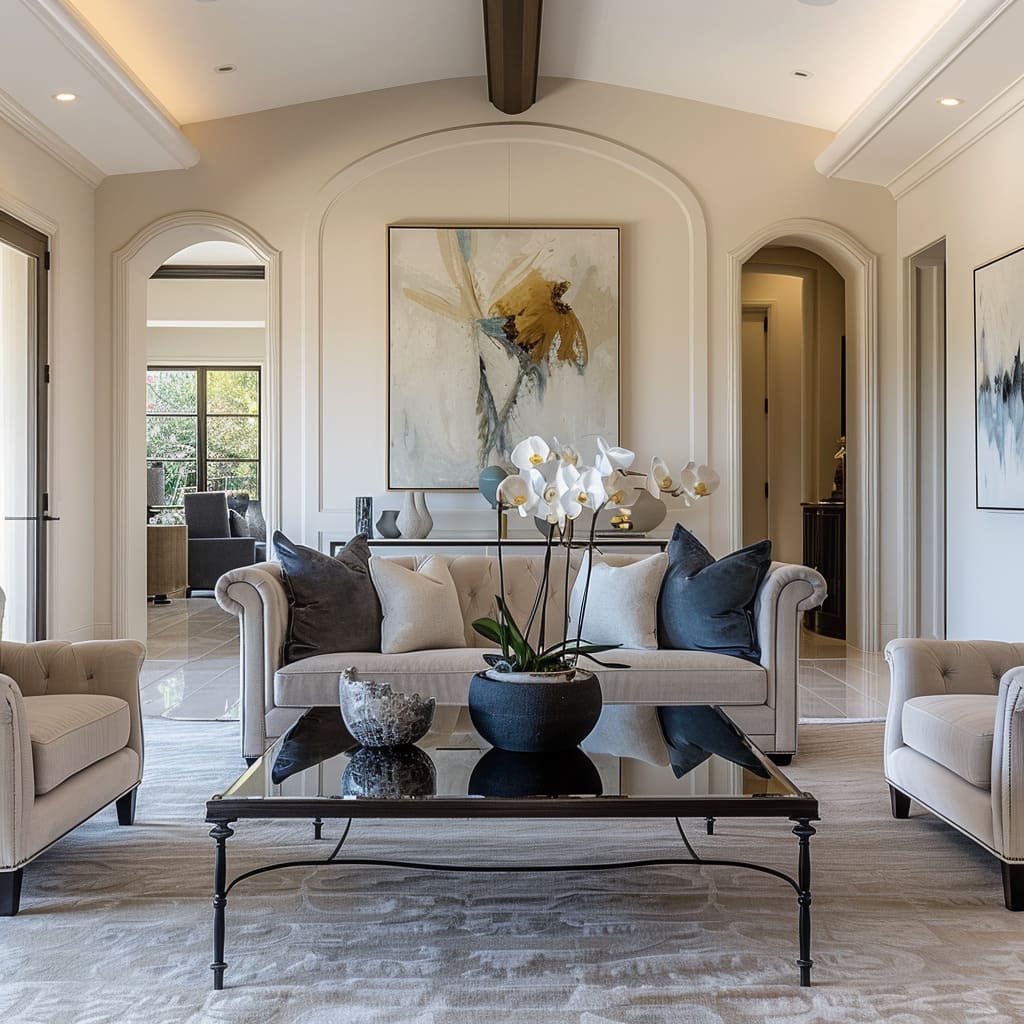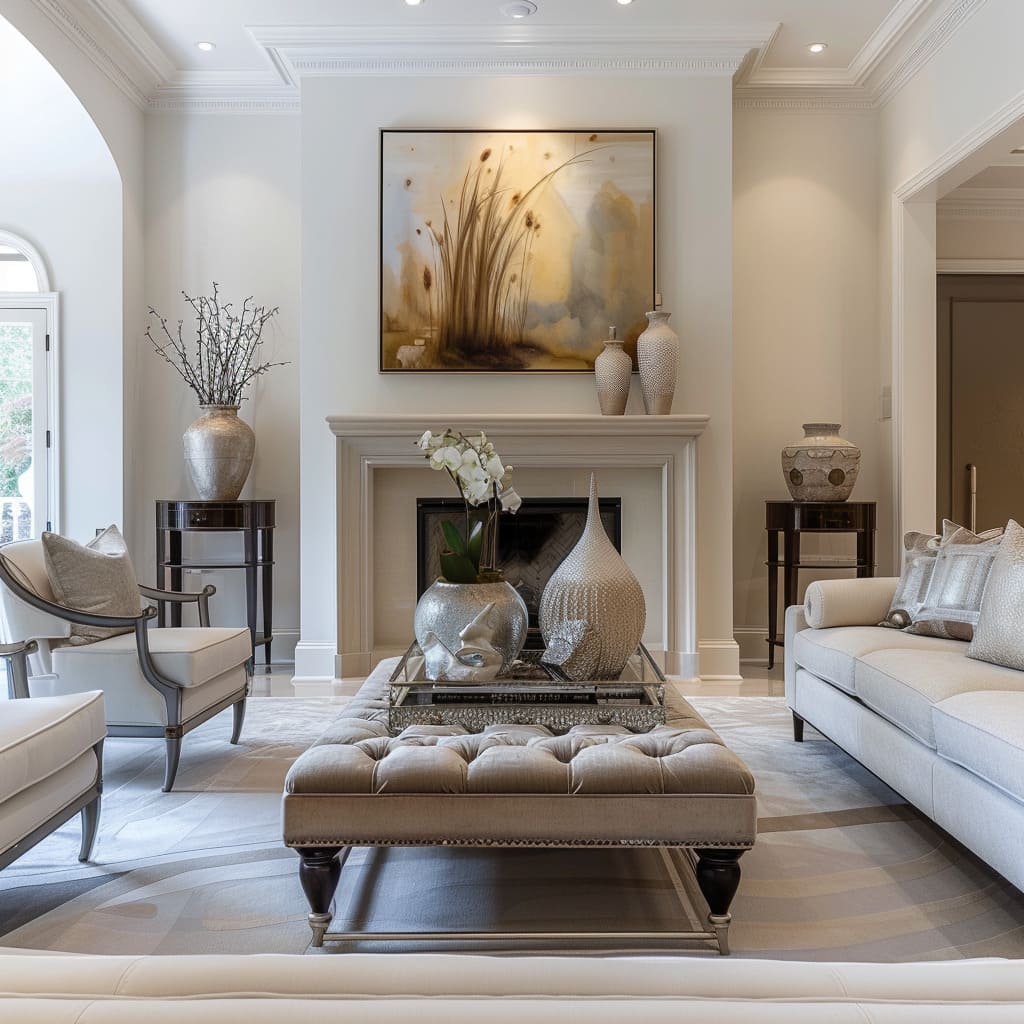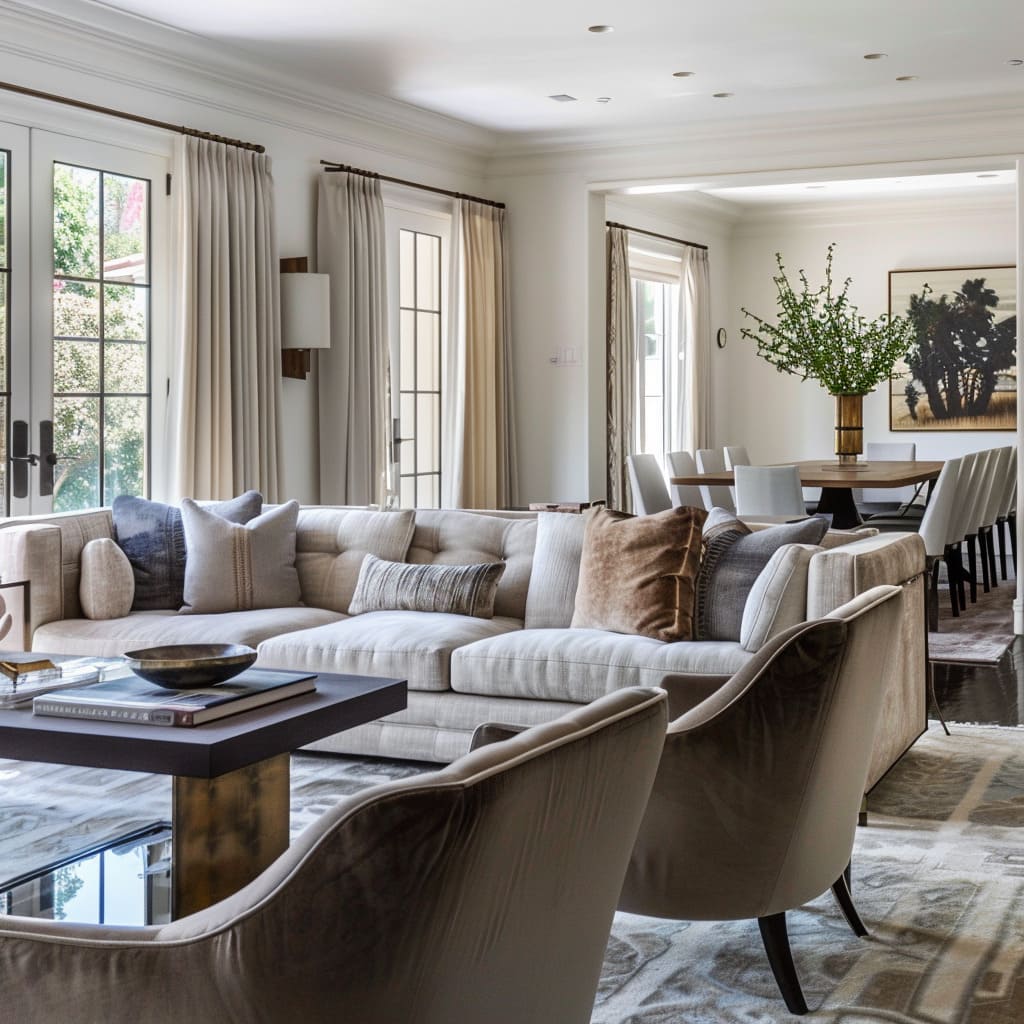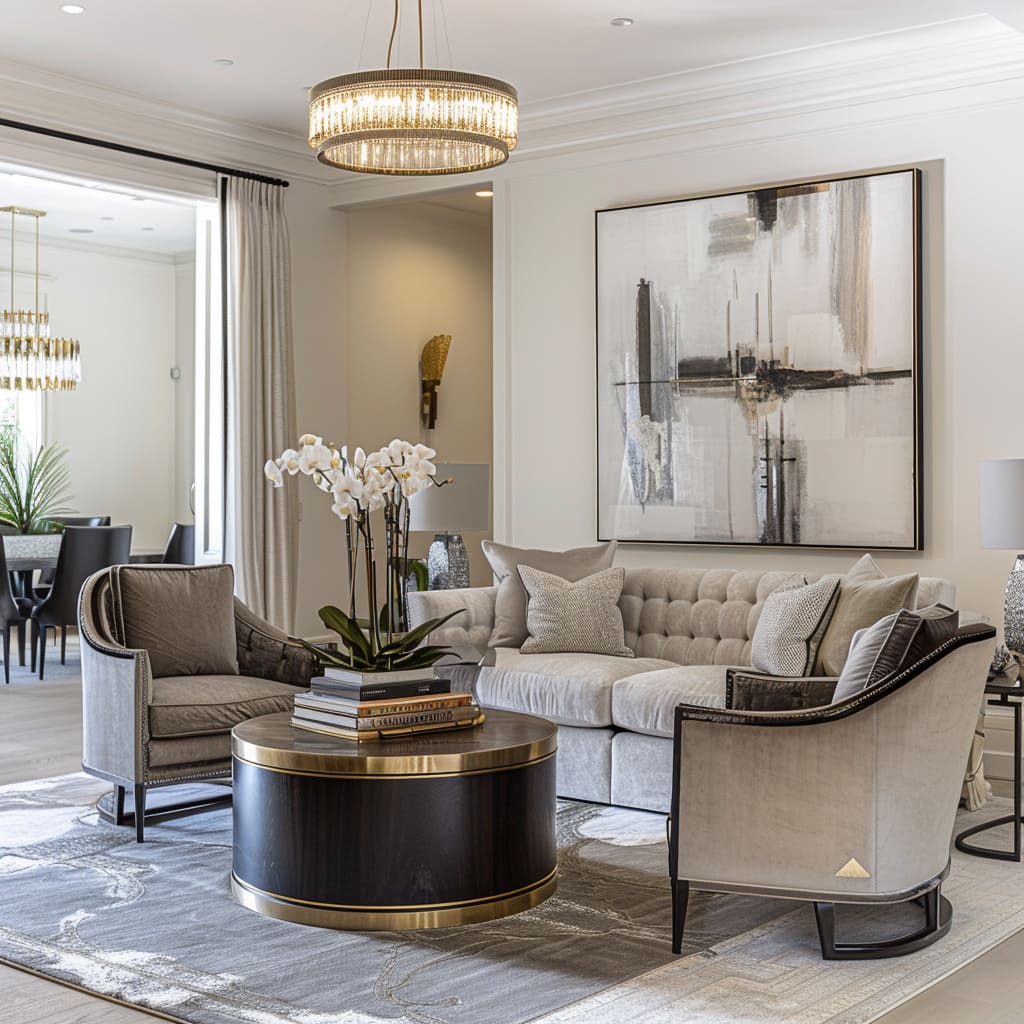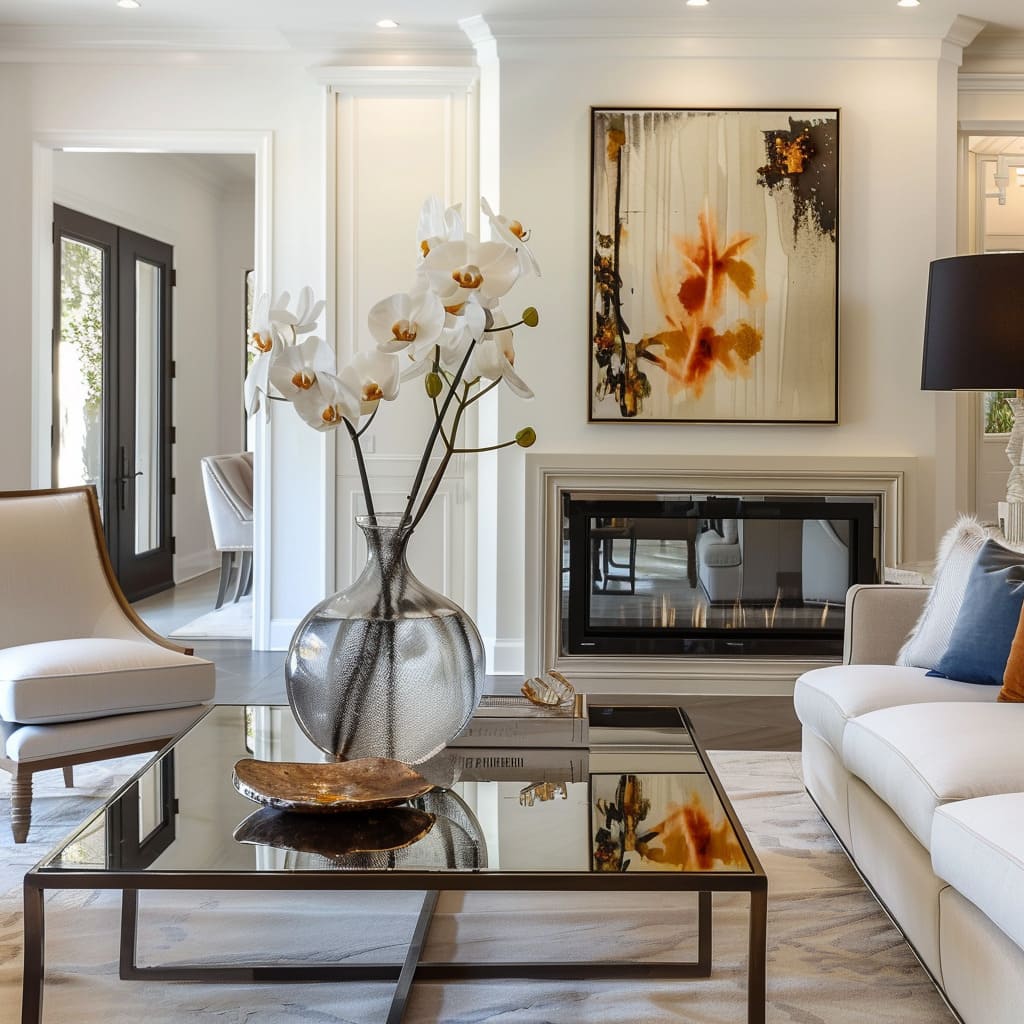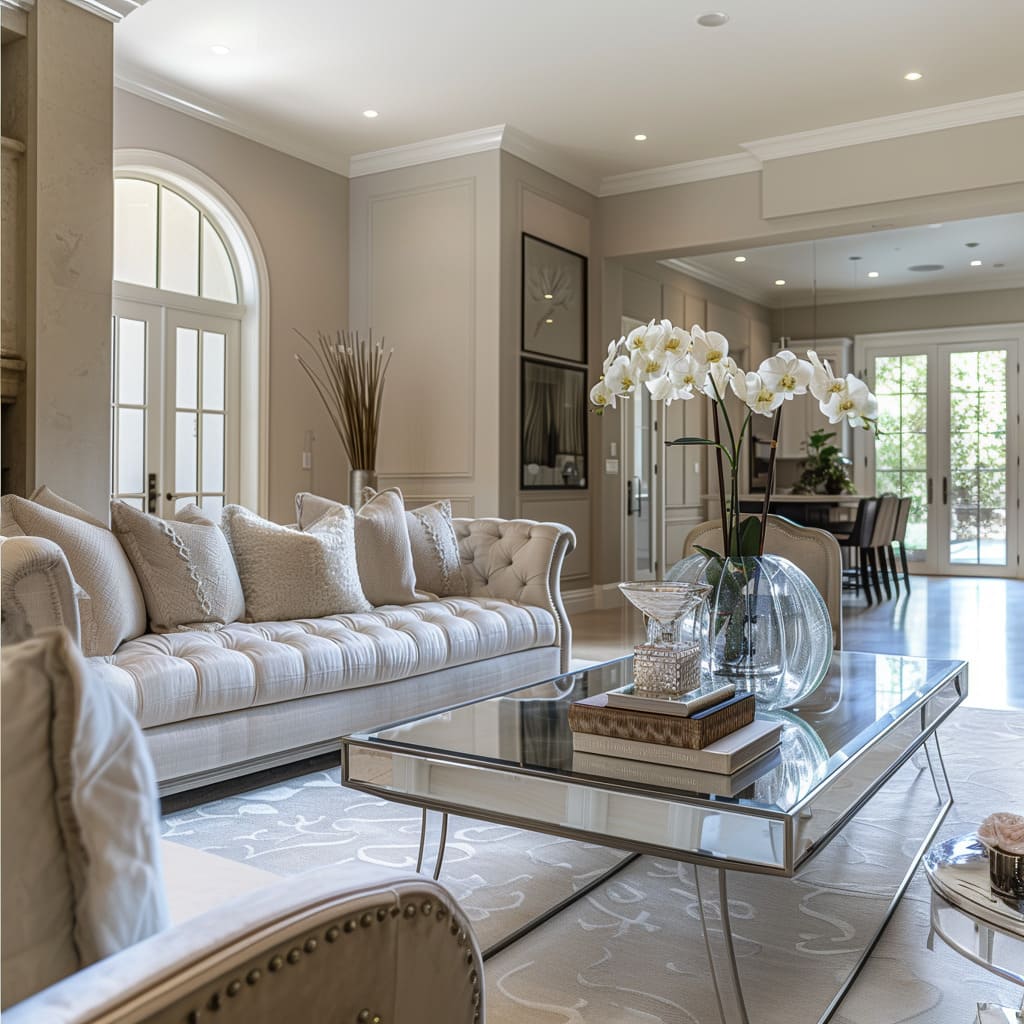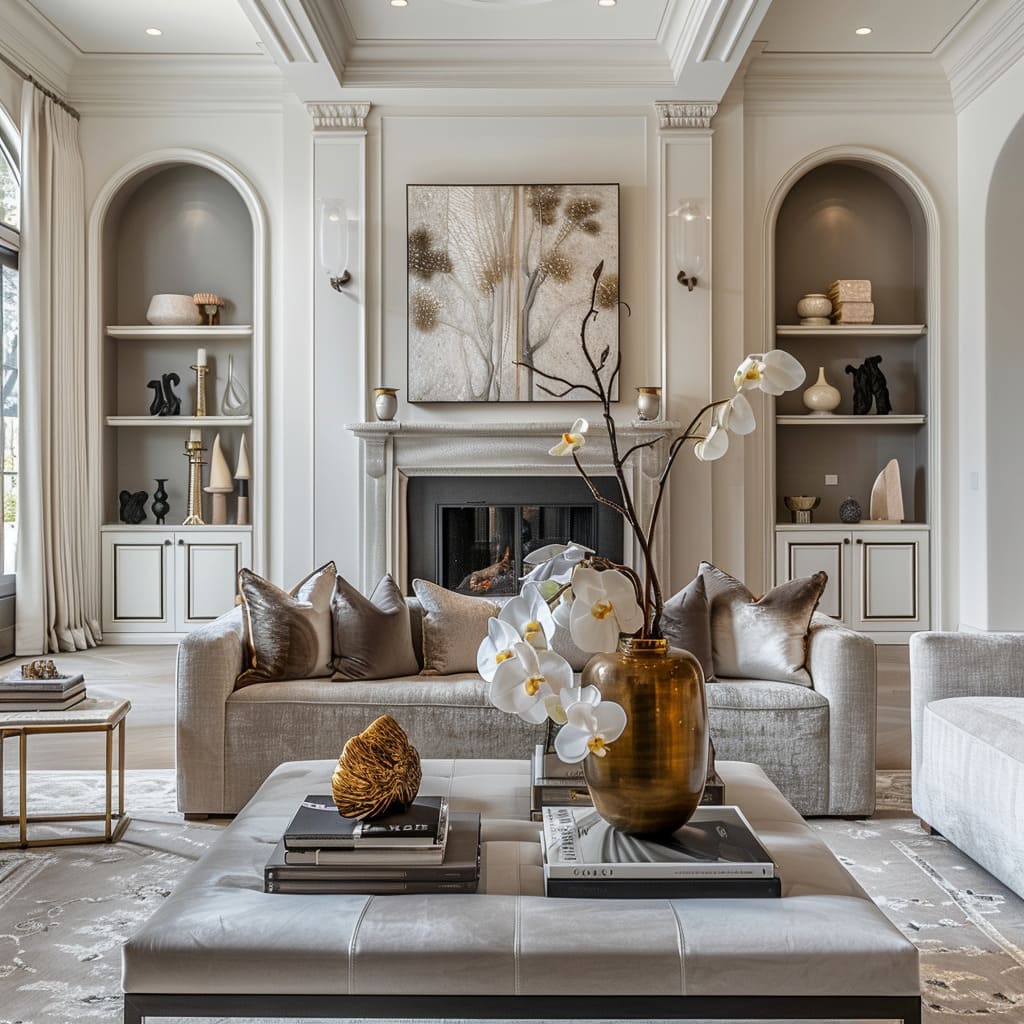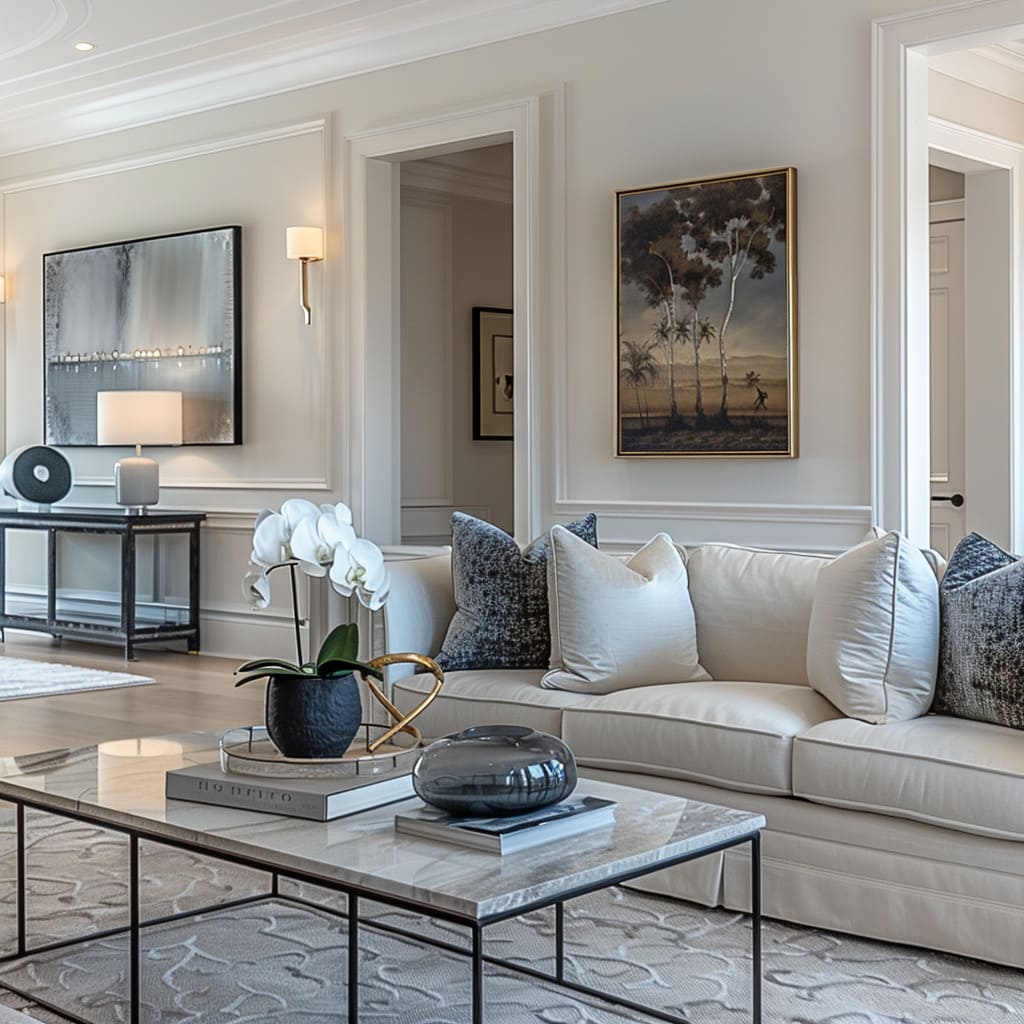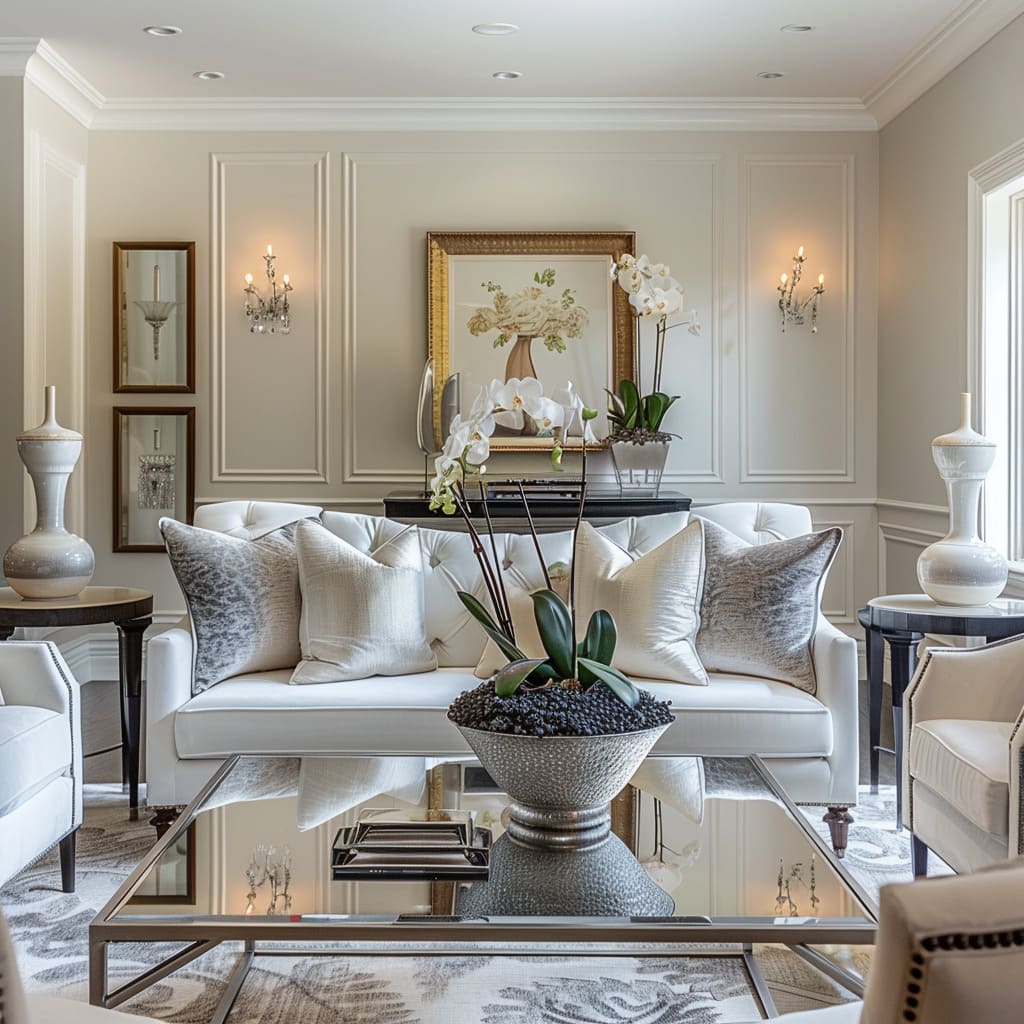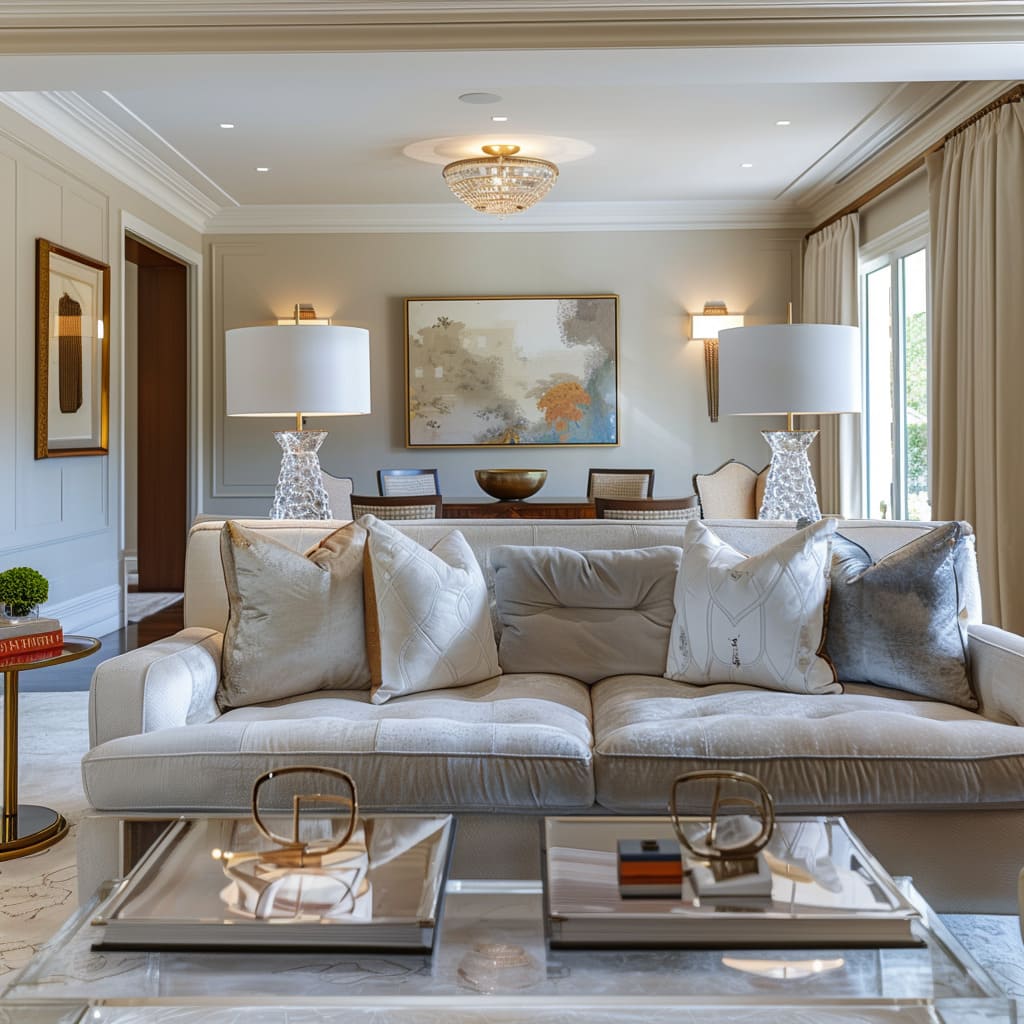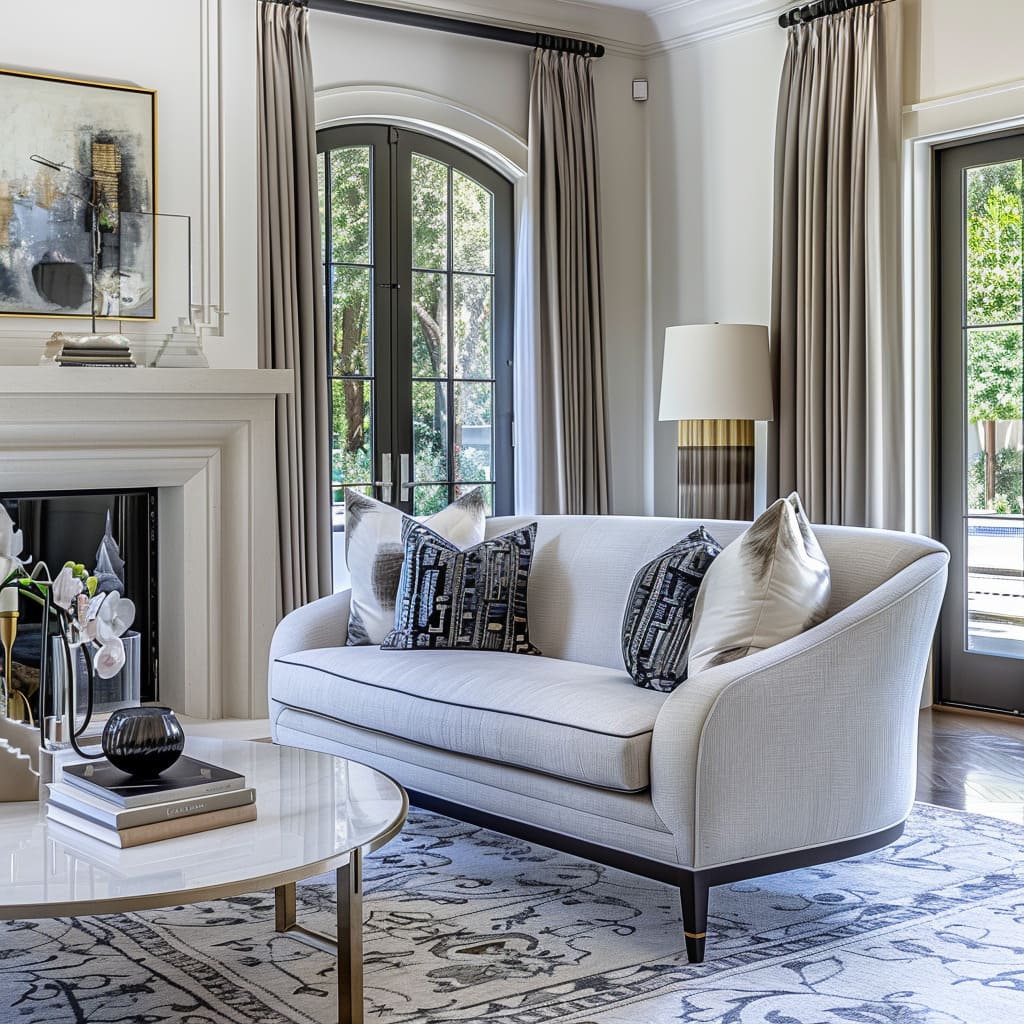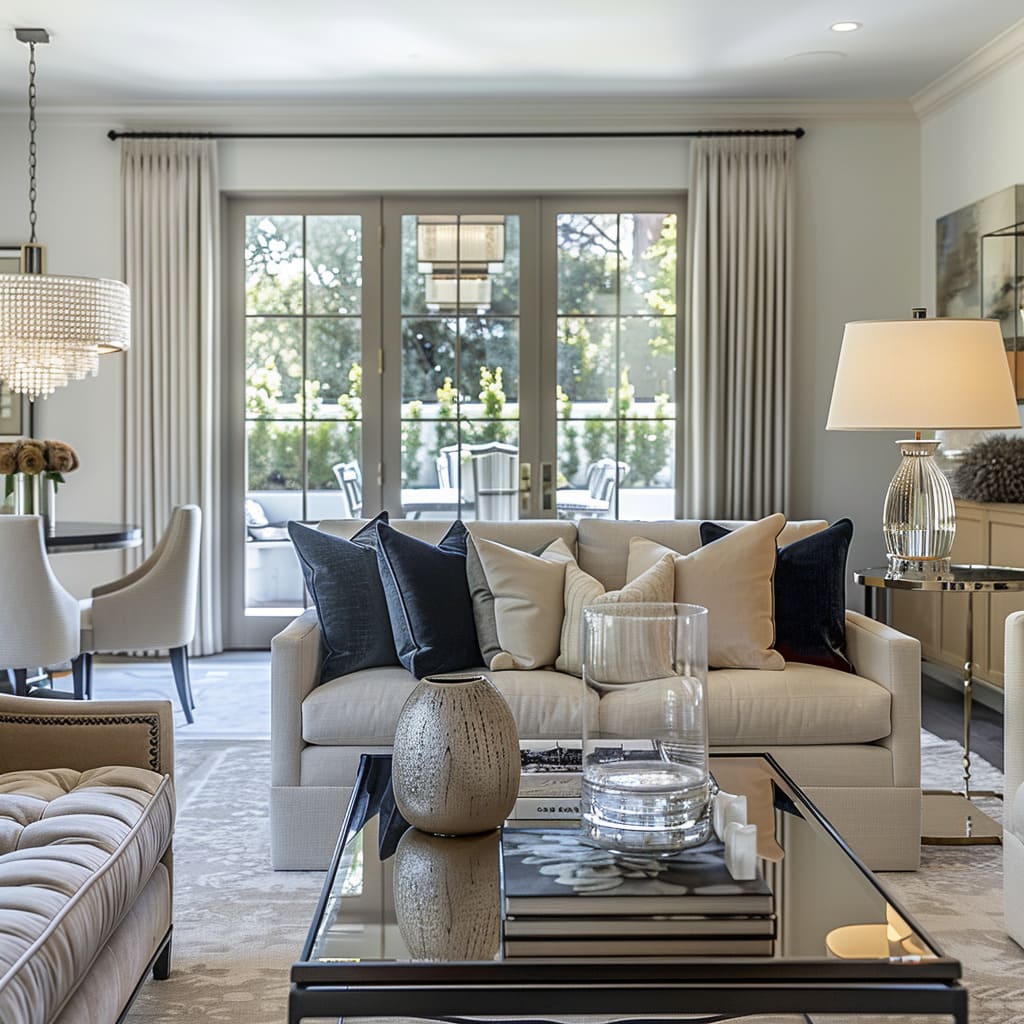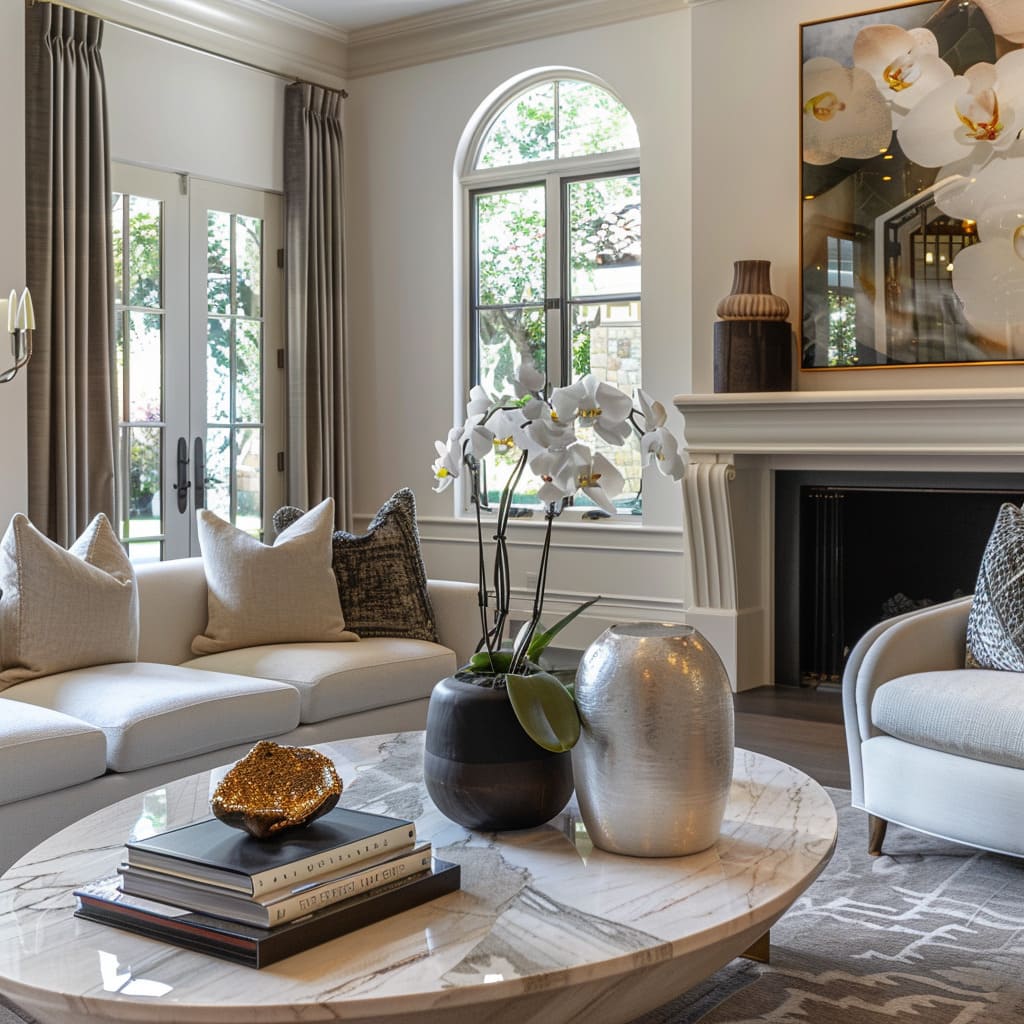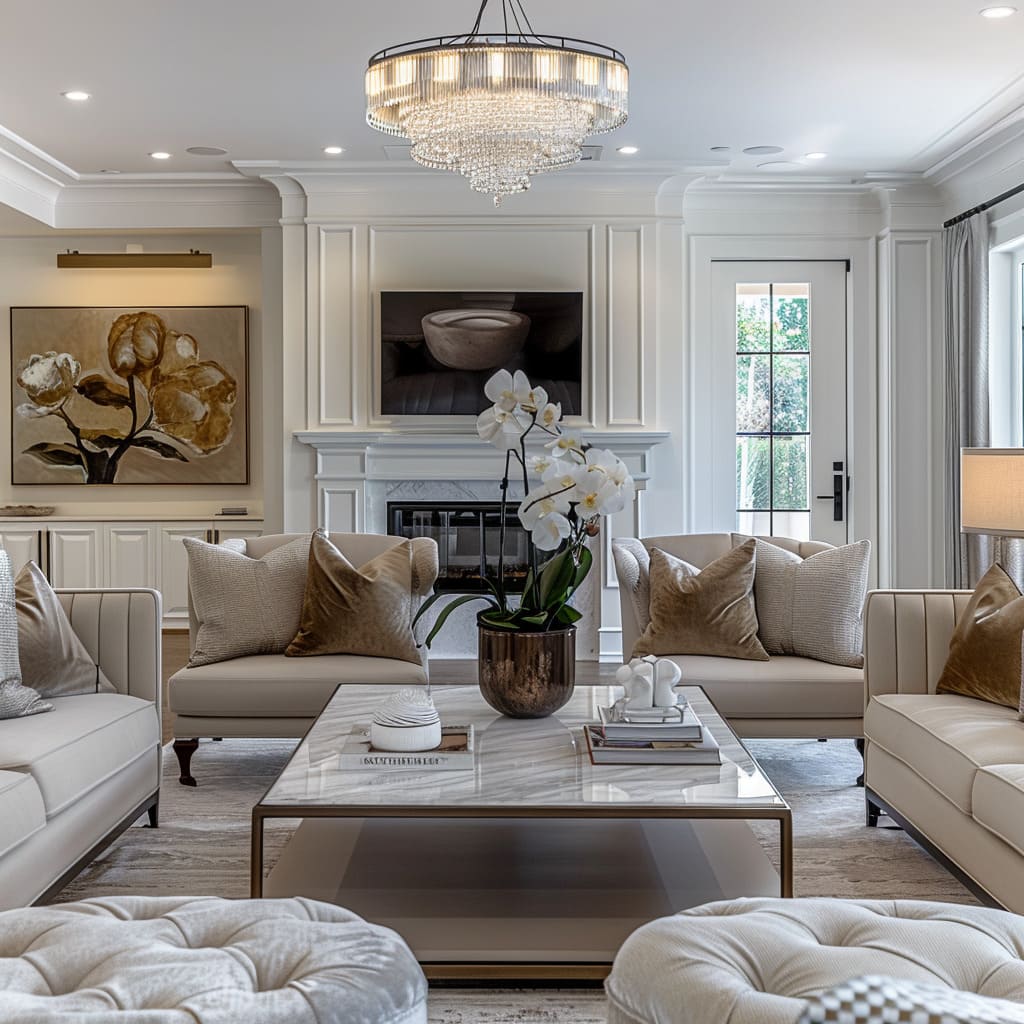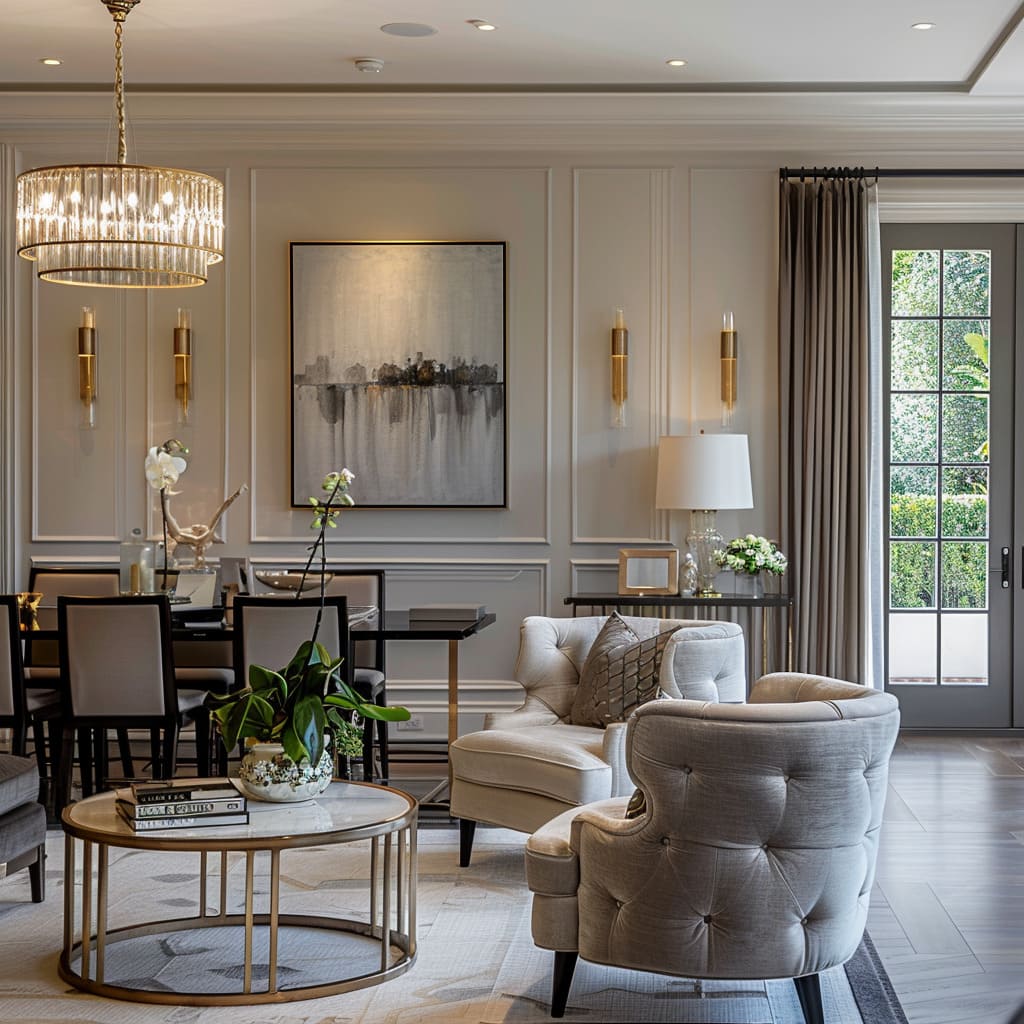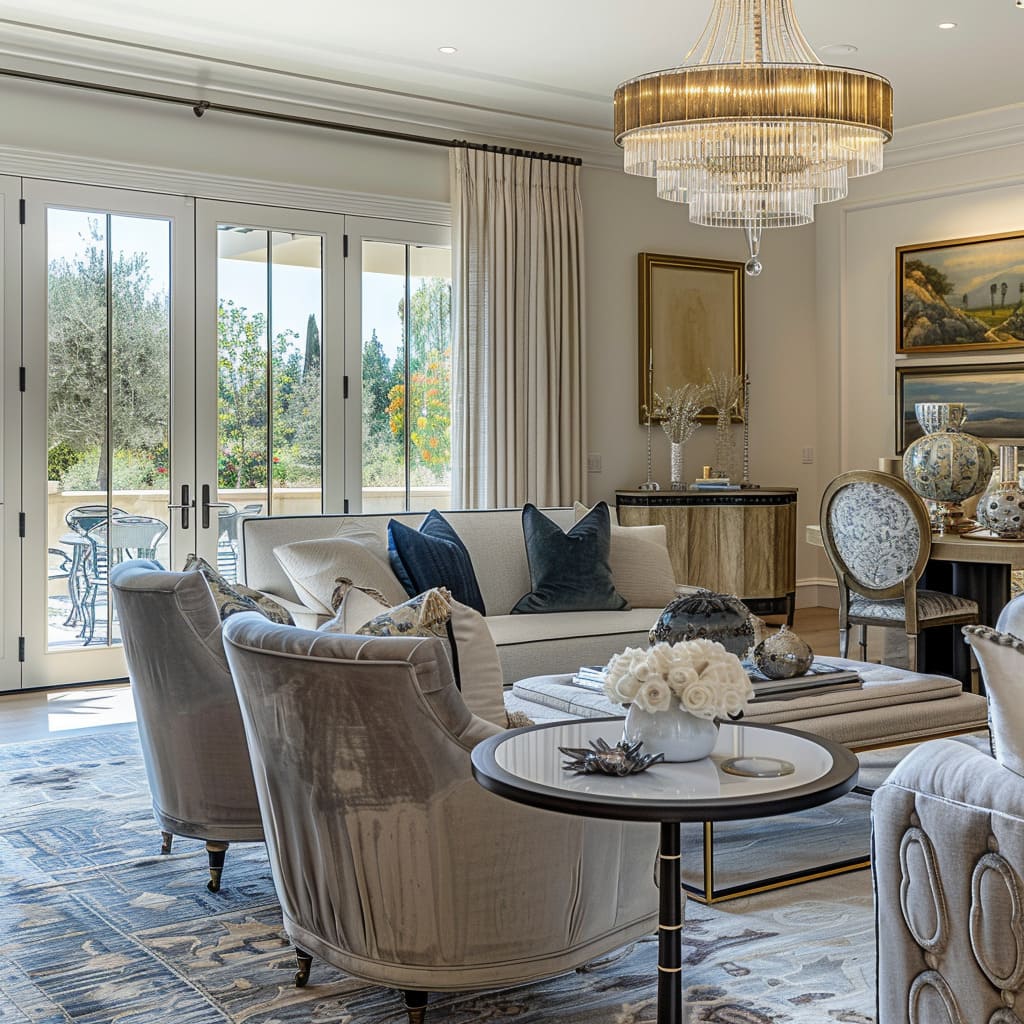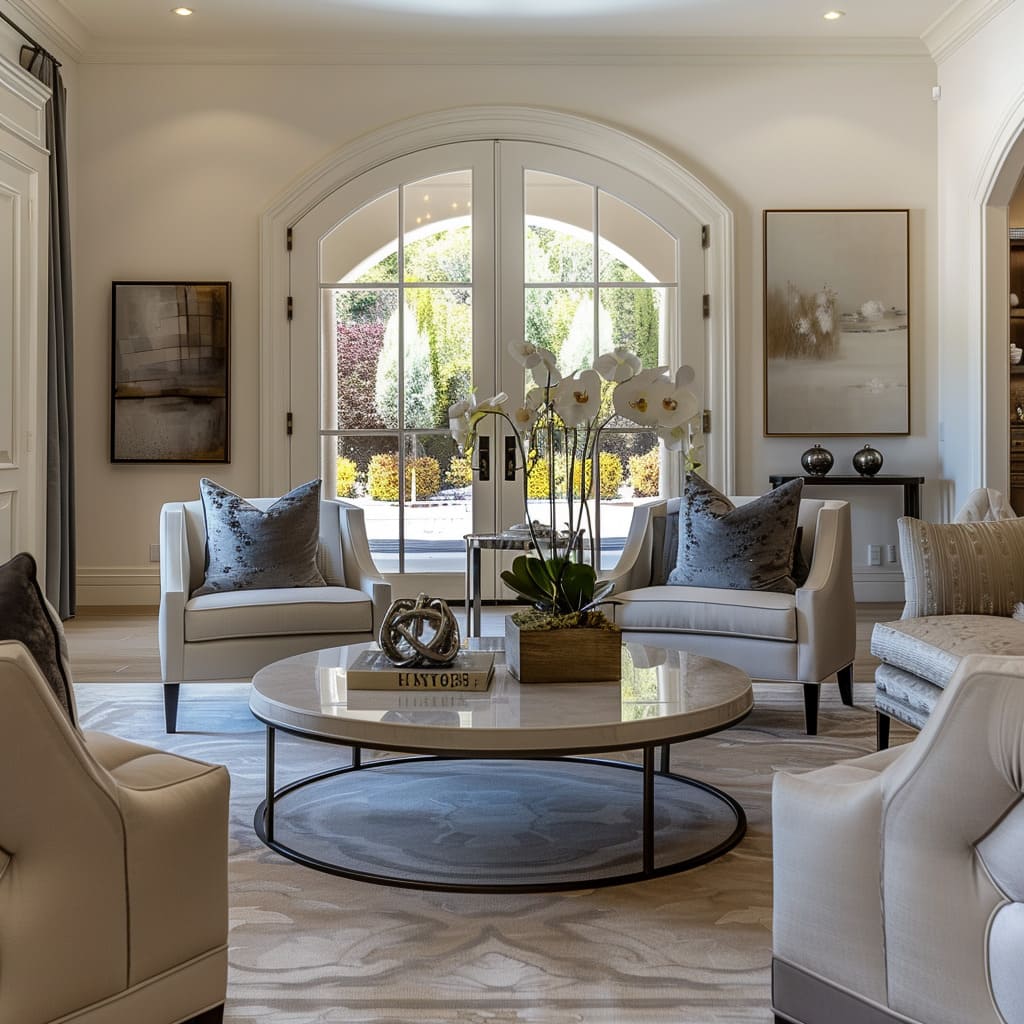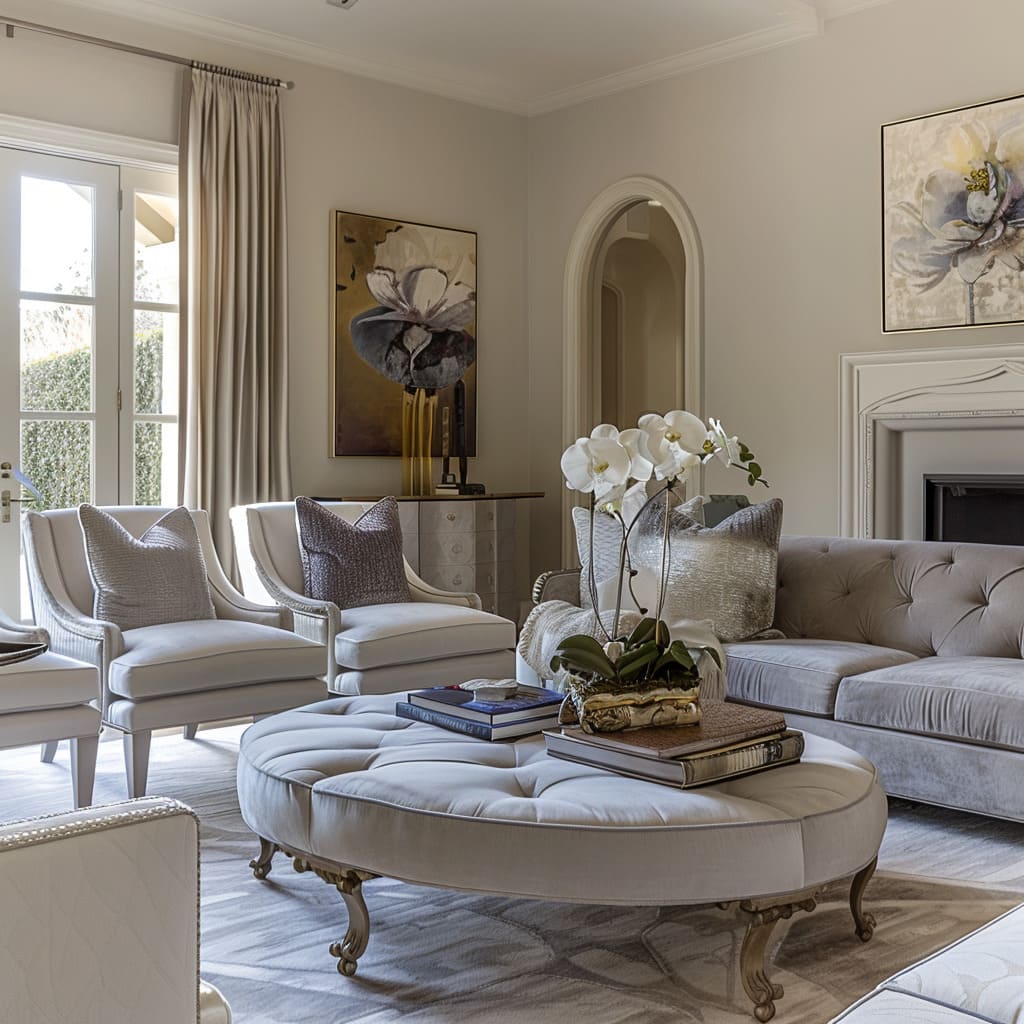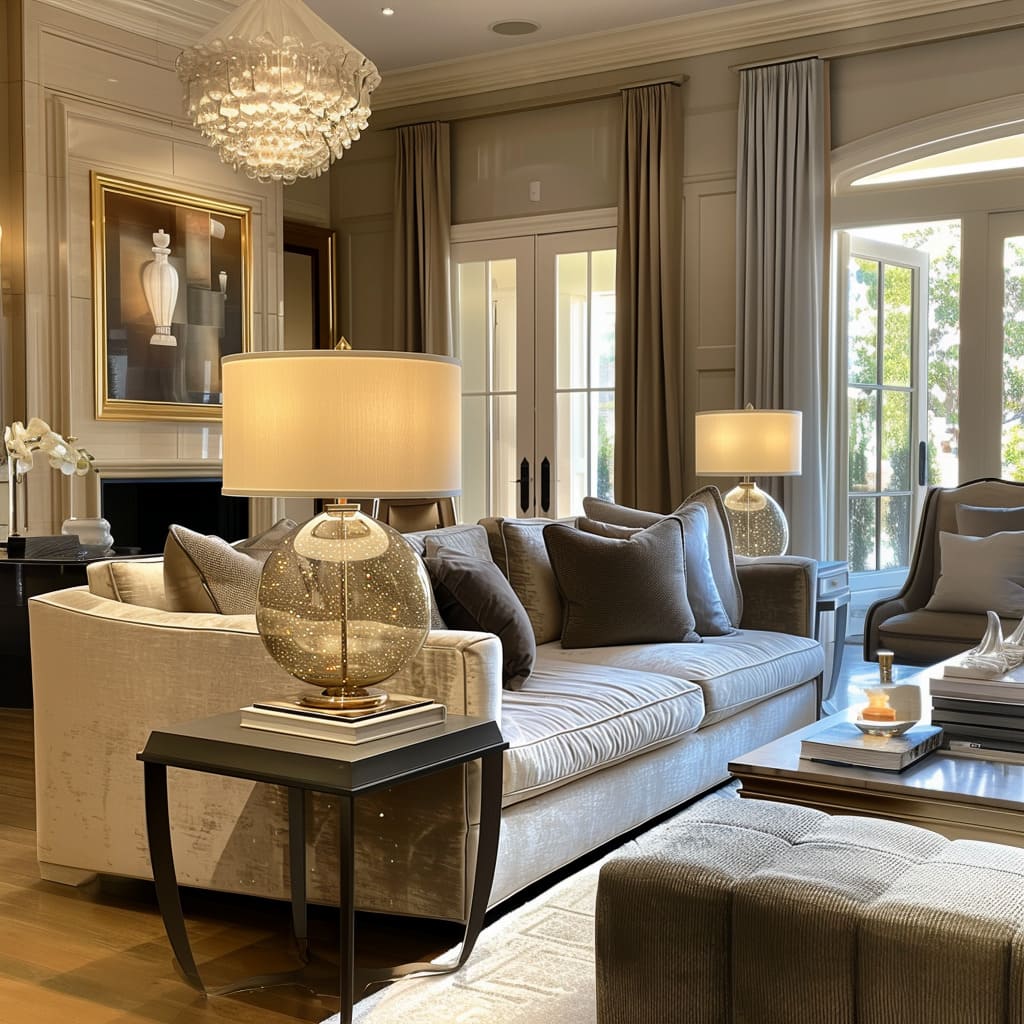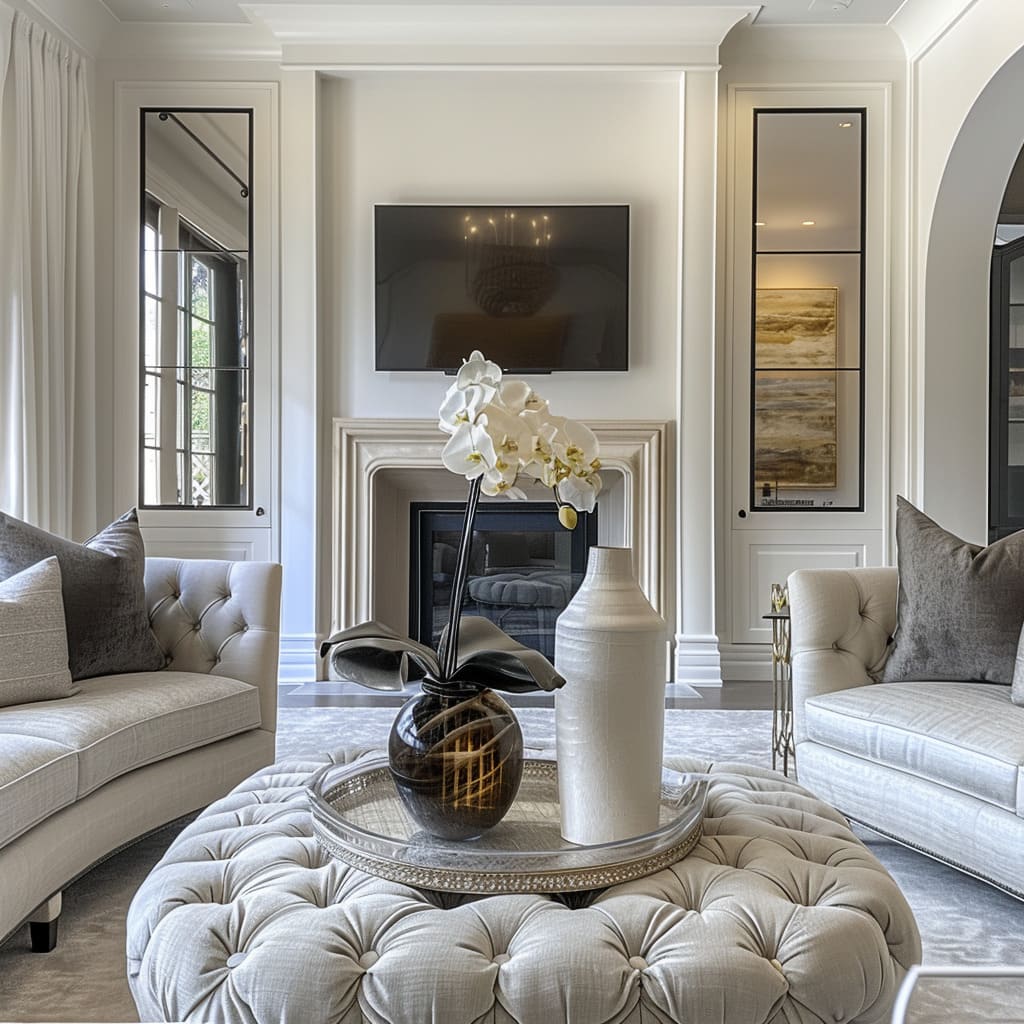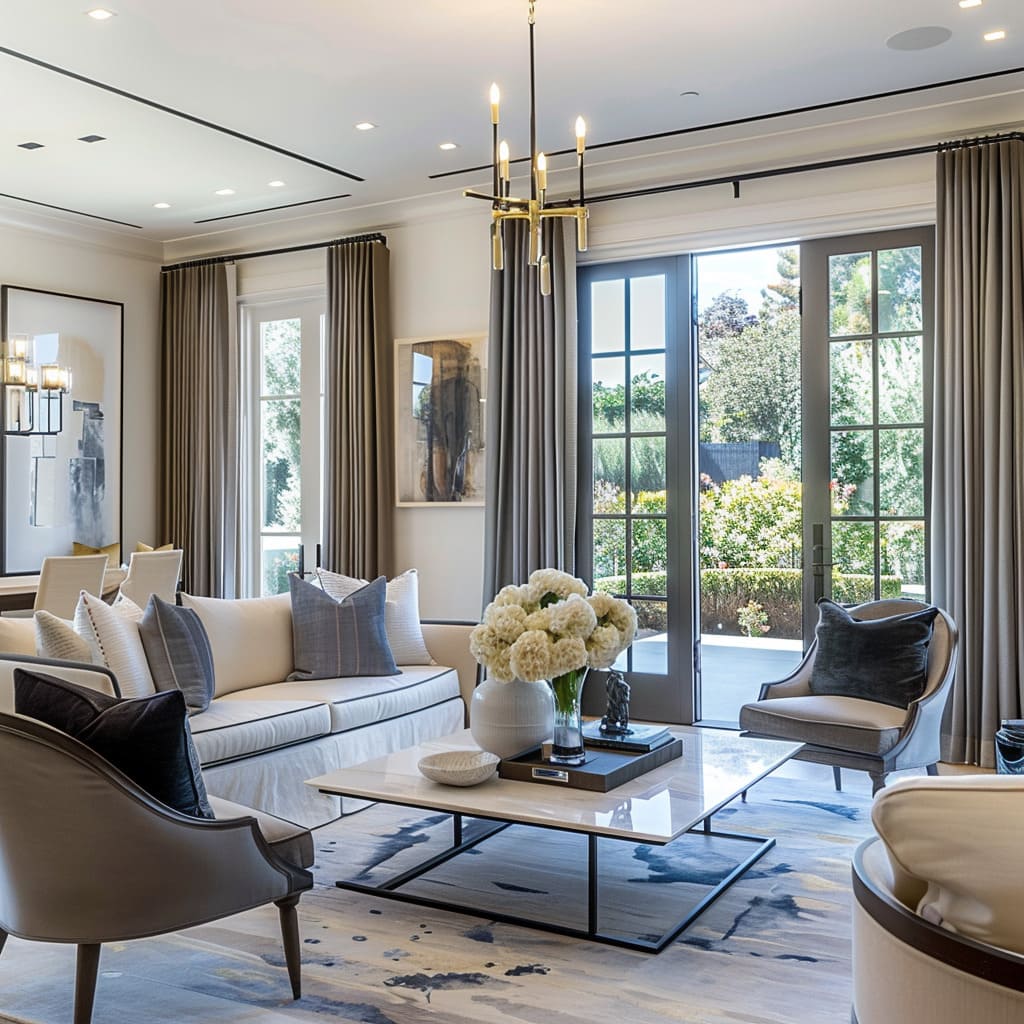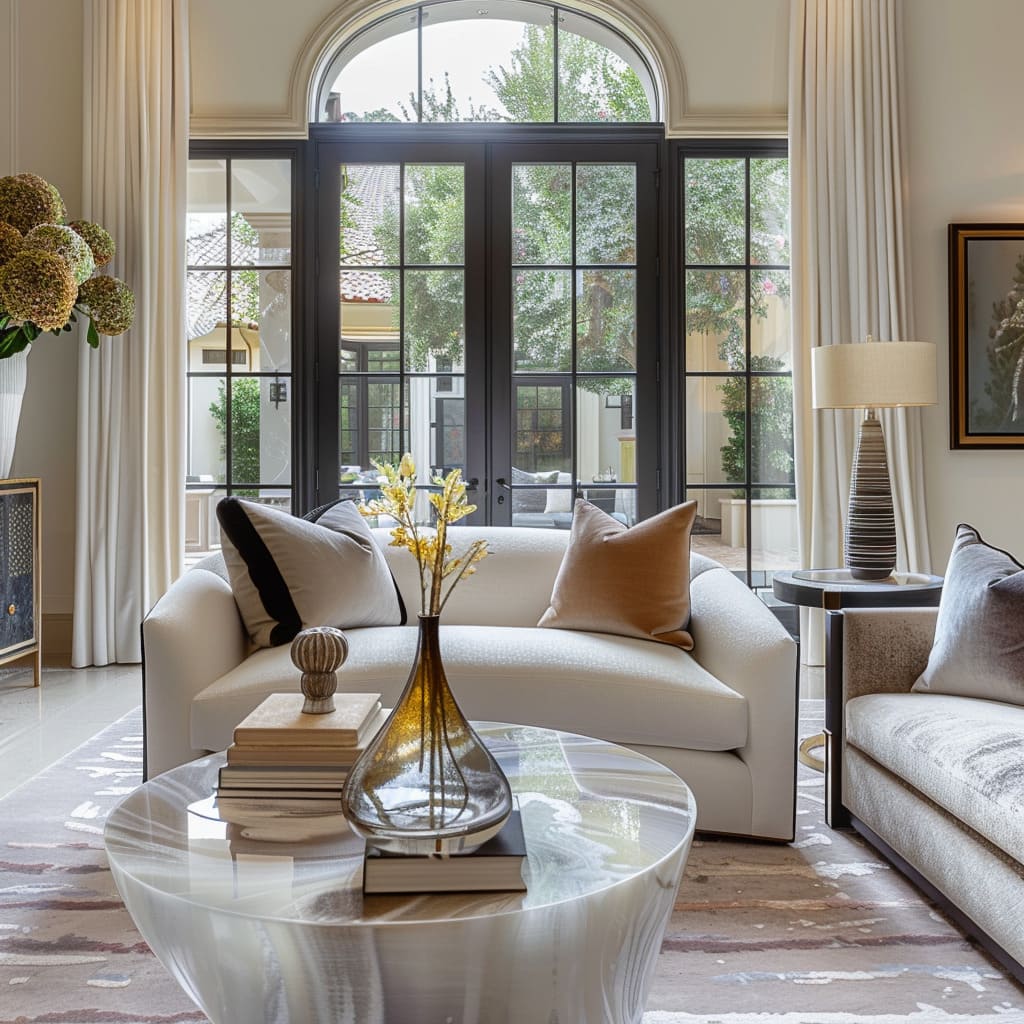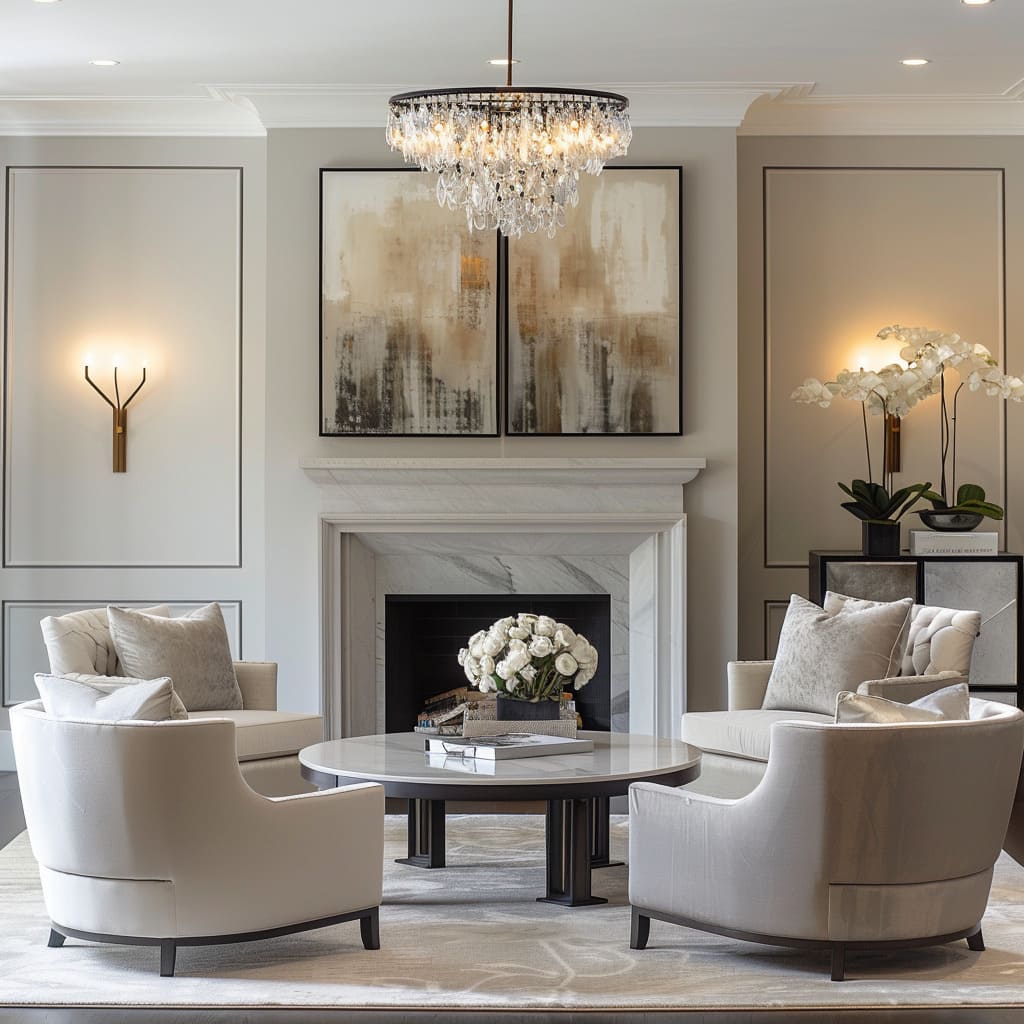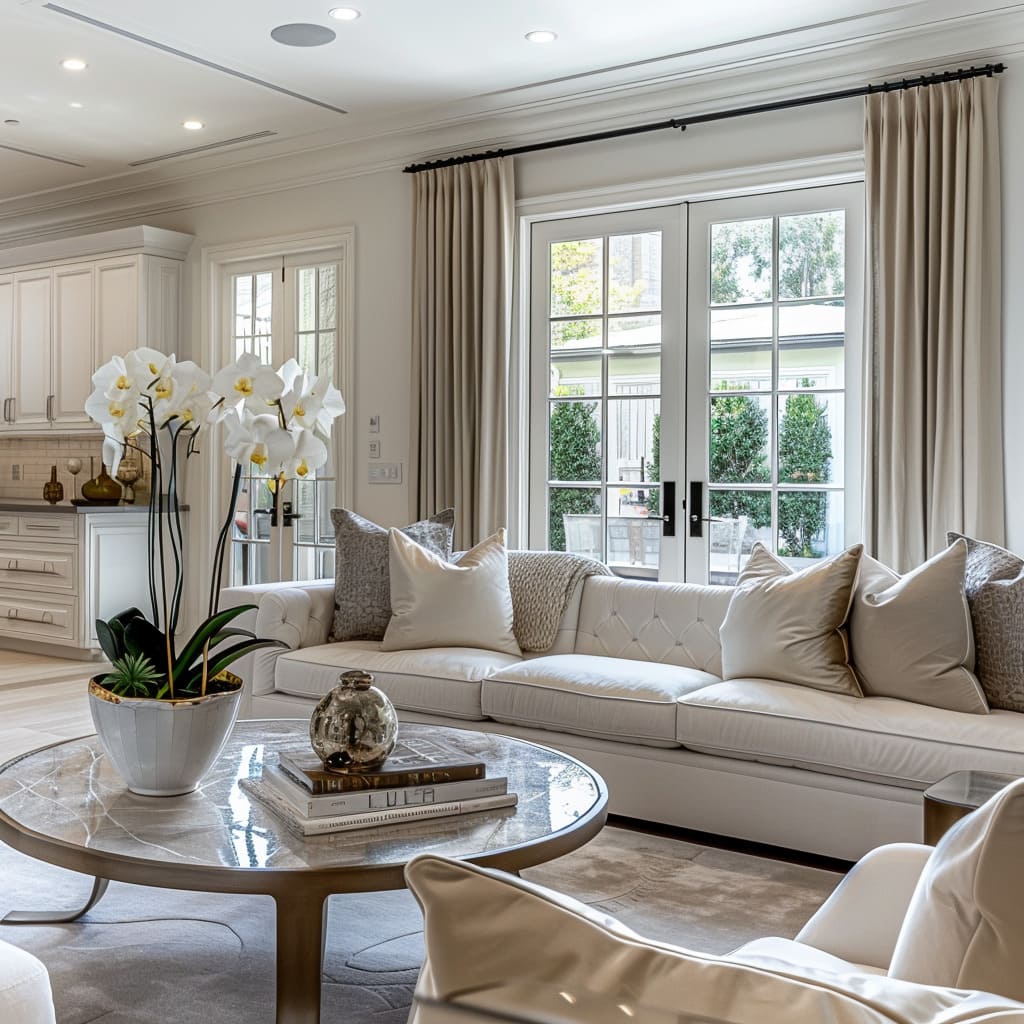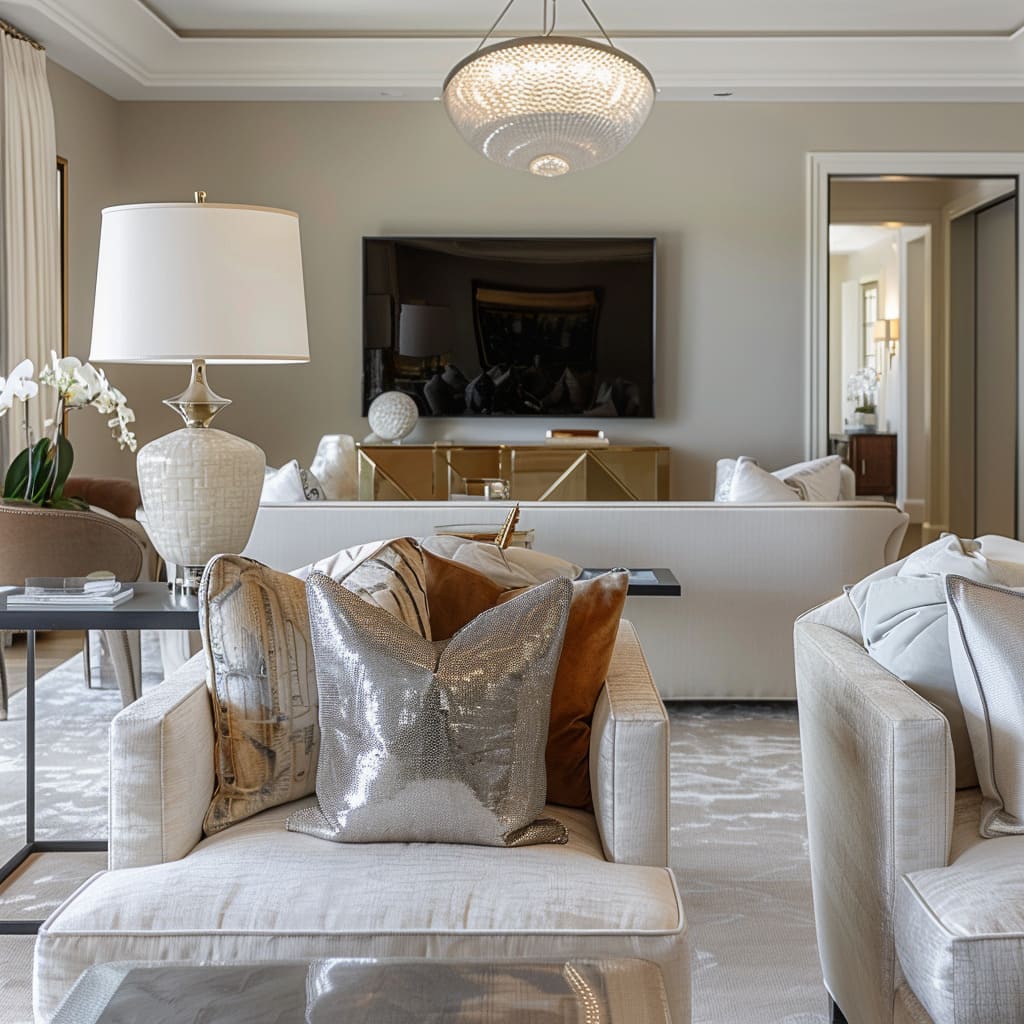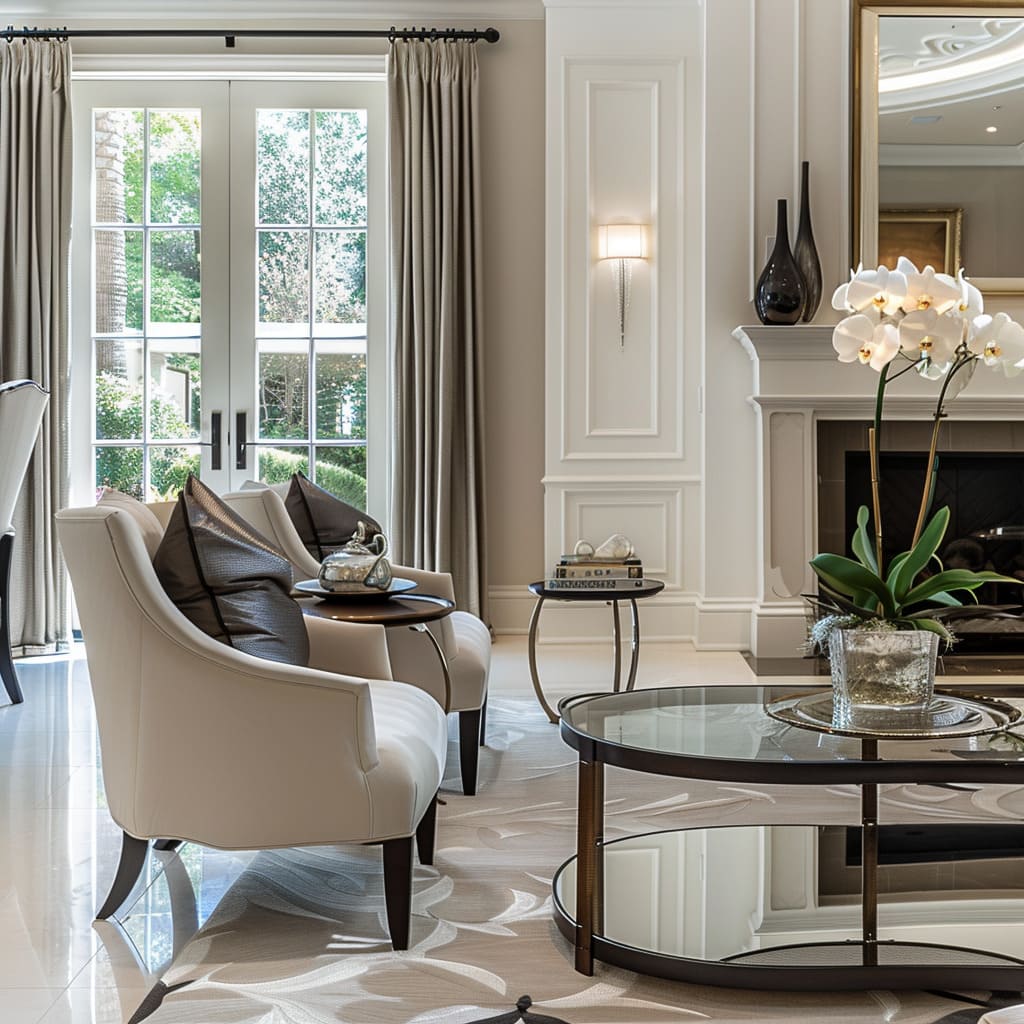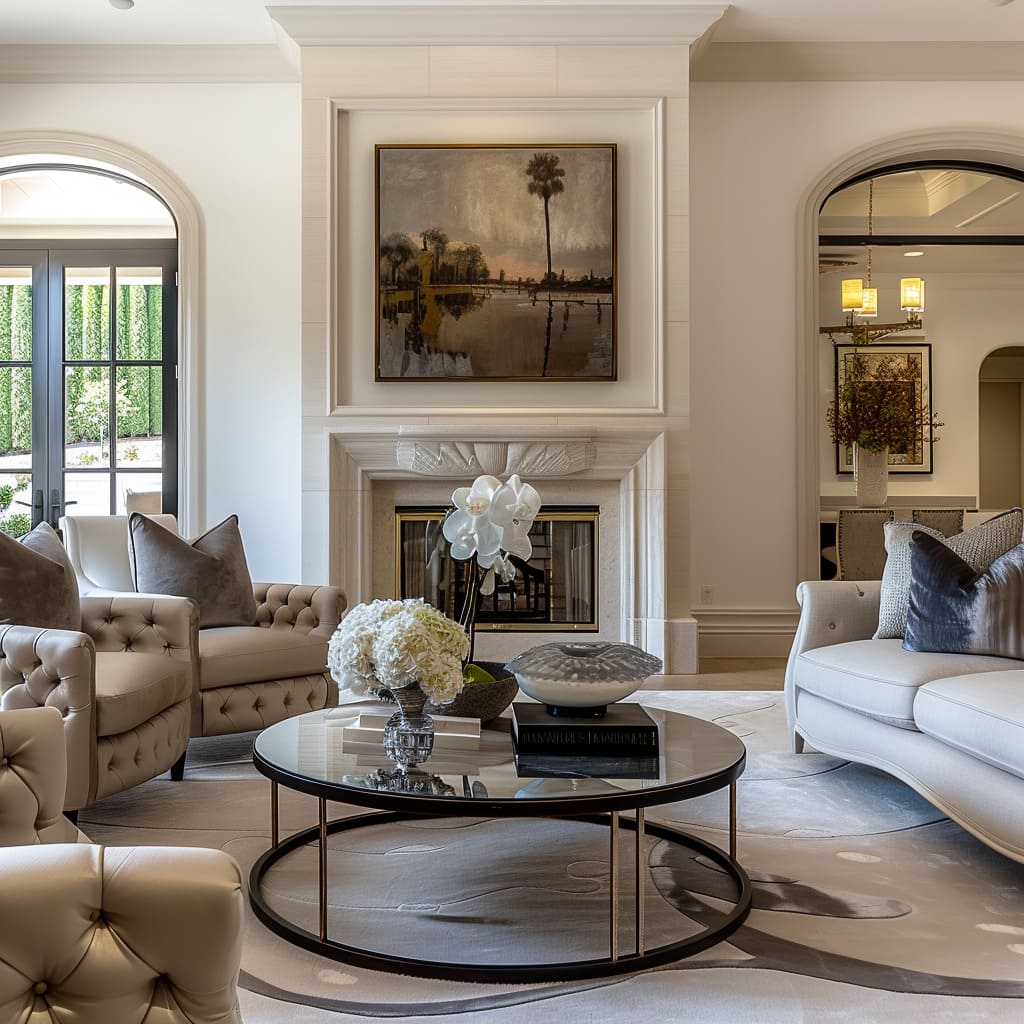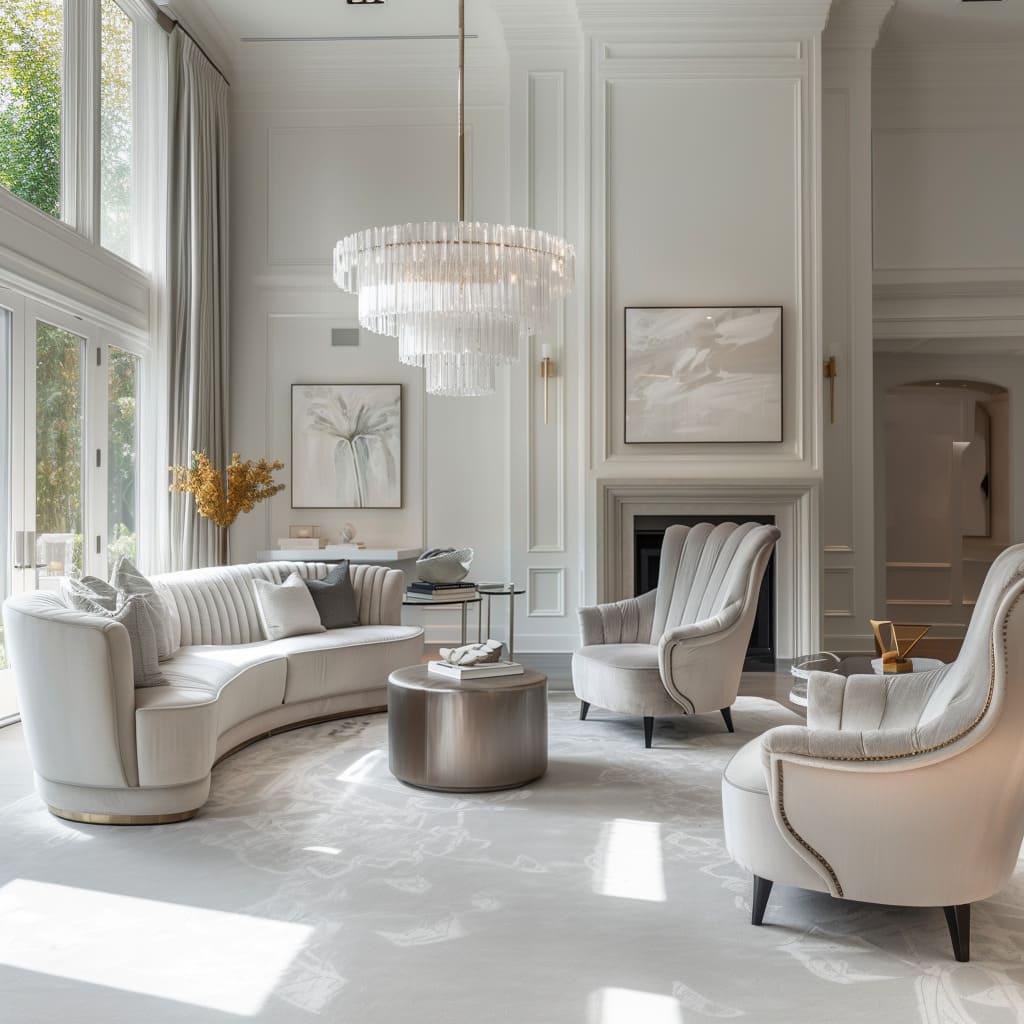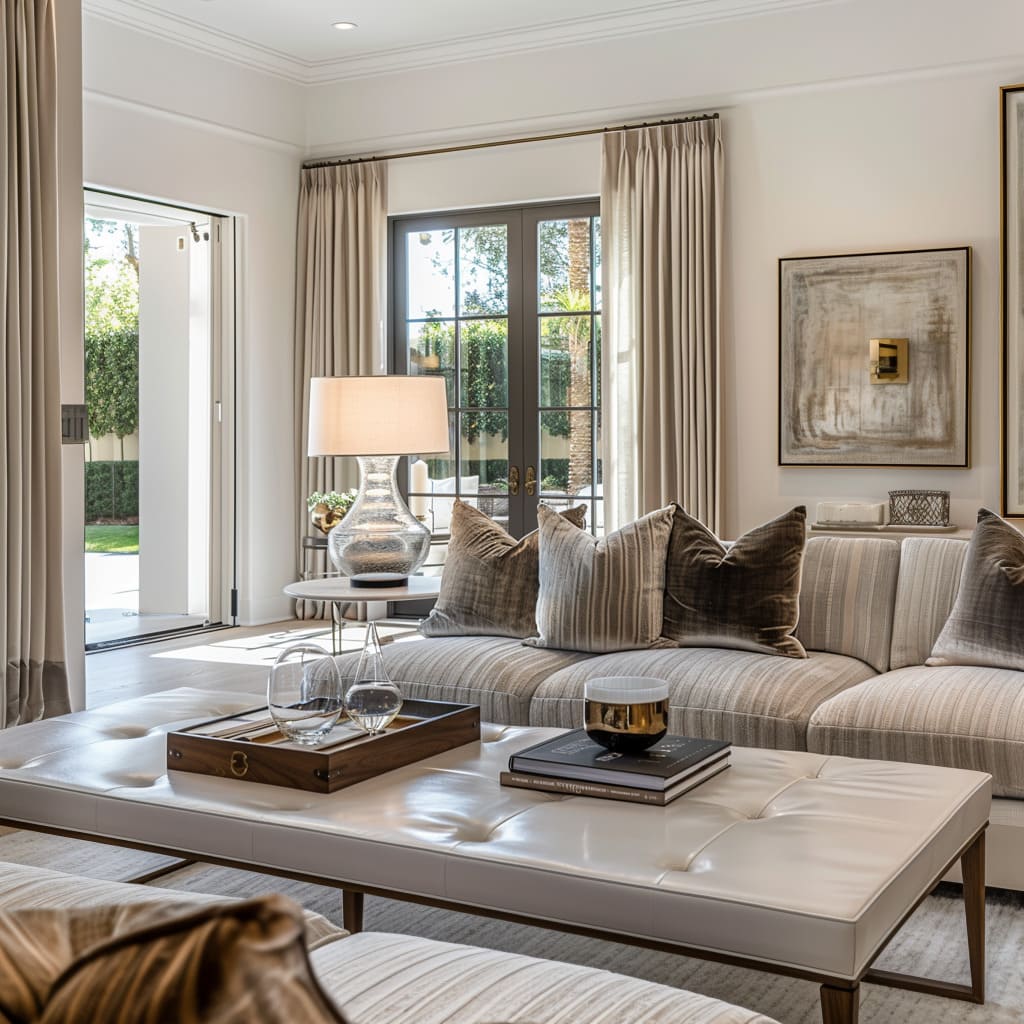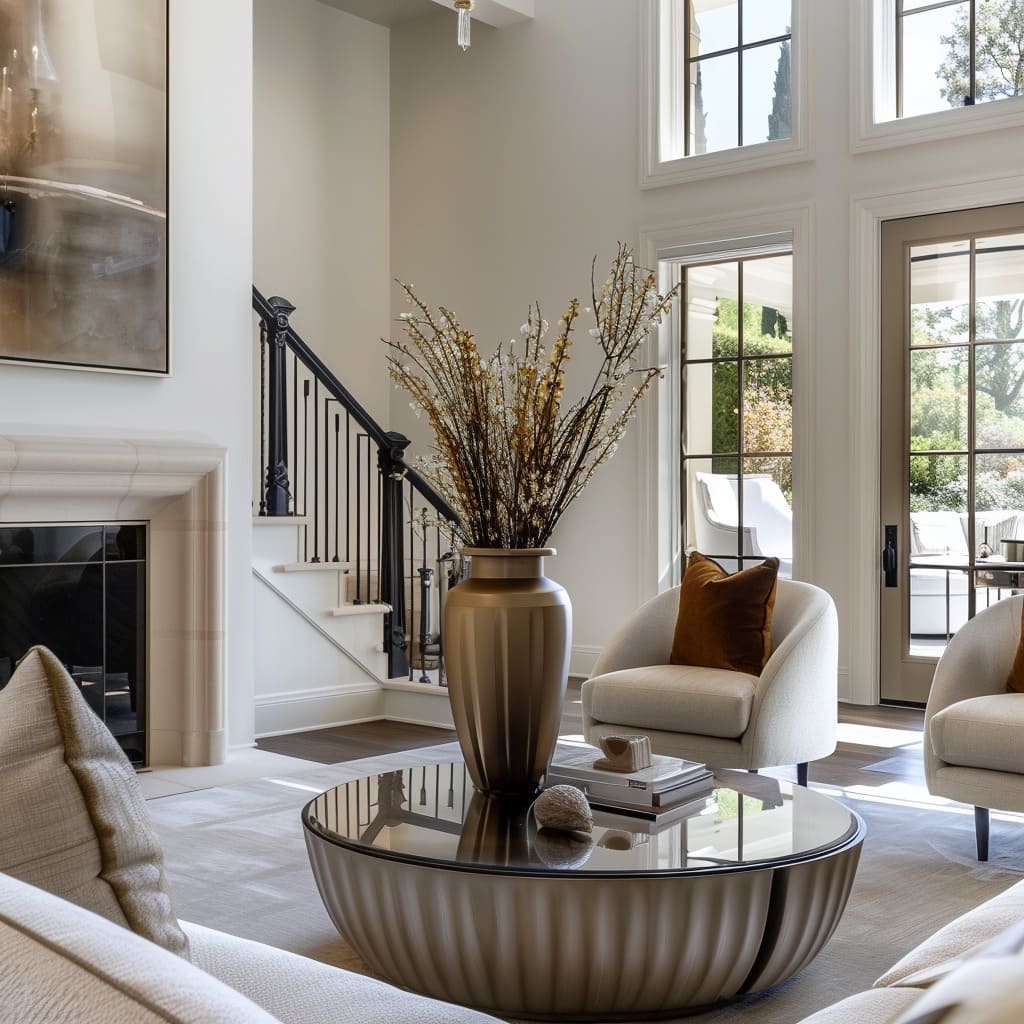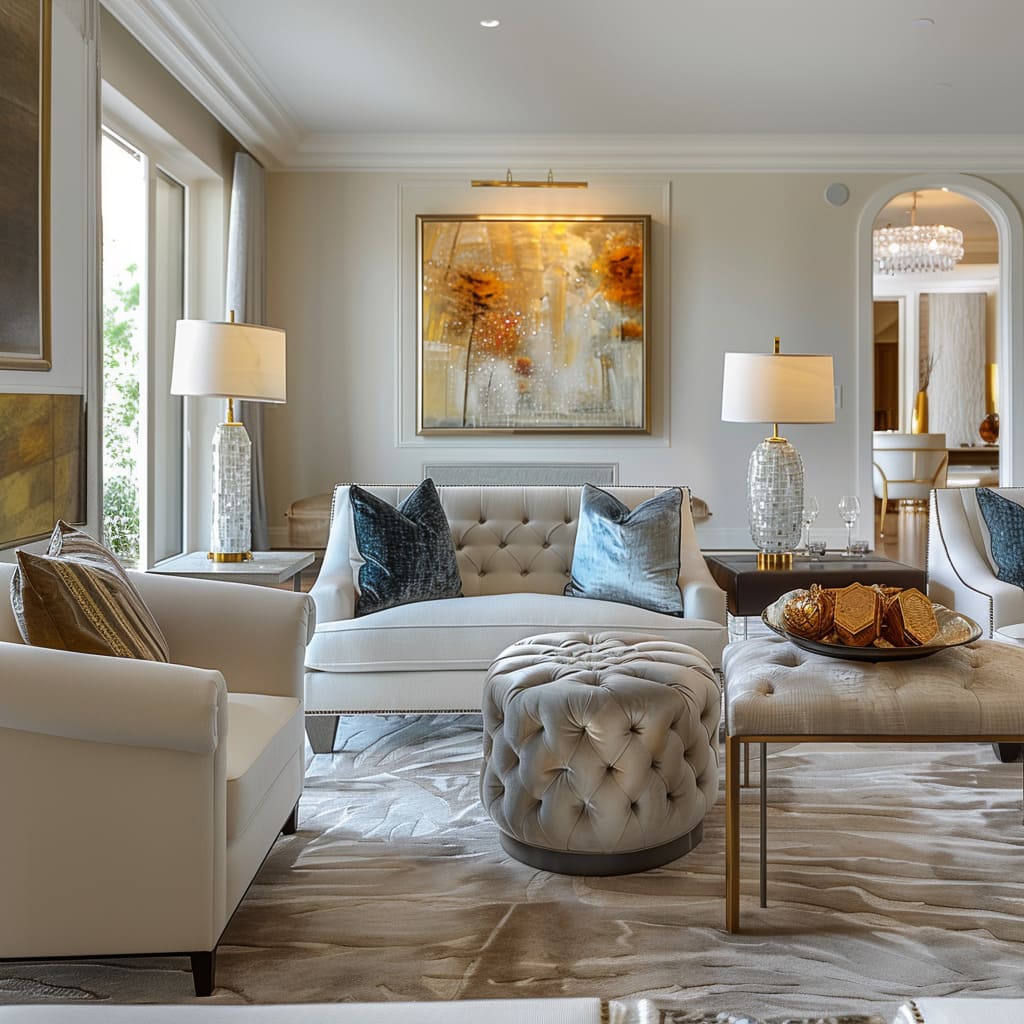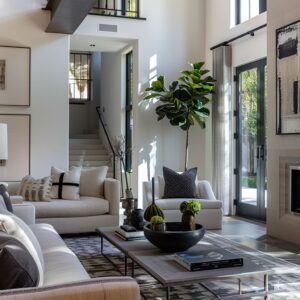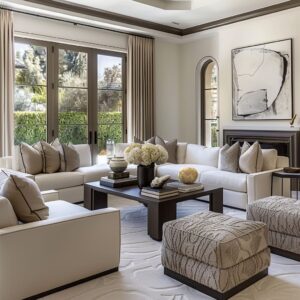Definition of Transitional Style.
Transitional style is a blend of traditional and contemporary design elements, creating a harmonious and cohesive look. This style embraces the best of both worlds, combining the comfort and familiarity of classic design with the clean lines and understated elegance of modern decor.
It offers a balanced approach, where old meets new in a seamless fusion. The origins of transitional style can be traced back to the early 20th century when designers began to seek a middle ground between the overly ornate details of traditional design and the stark minimalism of modernism.
This hybrid style aims to create spaces that are timeless, comfortable, and adaptable to various tastes and preferences.
Importance and Appeal.
The popularity of transitional style in modern homes is largely due to its versatility. This style can easily adapt to different settings and personal tastes, making it a favorite among homeowners and interior designers alike.
It provides the comfort and warmth of traditional design without feeling dated, while also incorporating the simplicity and sophistication of contemporary decor. This makes it an ideal choice for those who appreciate both classic and modern aesthetics.
The balanced approach of transitional style means that it avoids the extremes of both traditional and modern design, offering a middle ground that feels welcoming and stylish. It allows for the incorporation of cherished antiques and heirlooms alongside sleek, modern pieces, creating a look that is both cohesive and dynamic.
The subtlety of transitional design elements means that they do not compete for attention, but rather work together to create a unified and pleasing environment.
Purpose of the Guide.
The purpose of this guide is to provide comprehensive and practical instructions on achieving a transitional style in living rooms. This includes detailed tips and examples that demonstrate how to blend traditional and contemporary elements effectively.
Whether you are starting from scratch or looking to update your existing decor, this guide will help you create a living room that reflects the key principles of transitional design. By following the advice and insights provided, you can achieve a space that is both stylish and comfortable, perfectly suited to your personal tastes and lifestyle.
This guide will cover various aspects of transitional decor, from selecting the right color palette and furniture to incorporating the appropriate lighting and decorative elements. Each section will offer specific recommendations and examples to help you understand how to apply transitional design principles in your own home.
The aim is to equip you with the knowledge and confidence to create a living room that is balanced, inviting, and timeless. Transitional style offers a balanced and appealing approach to home decor, blending the best of traditional and contemporary design elements.
This guide aims to provide you with the tools and insights needed to achieve this style in your living room, ensuring a space that is both functional and aesthetically pleasing.
Color Palette
Neutral Base
In transitional decor, the color palette forms the foundation of the room’s overall aesthetic. Neutrals like beige, cream, grey, and other soft tones are essential for creating a calm and cohesive environment.
These colors serve as a versatile backdrop that allows other design elements to shine without competing for attention. The use of neutral tones provides a sense of balance and harmony, making the space feel open and inviting.
By starting with a neutral base, you create a timeless look that can easily be updated with new accents and accessories over time.Neutrals also offer the flexibility to mix and match furniture and decor from different styles without clashing. For instance, a classic beige sofa can pair seamlessly with both traditional wooden side tables and modern metal fixtures.
This adaptability is key in transitional style, which thrives on blending diverse elements to create a unified look. Moreover, neutrals are inherently soothing, promoting a relaxing atmosphere that is perfect for living rooms where people gather to unwind and socialize.
Depth and Variation
While a neutral base is crucial, it’s important to add depth and variation to prevent the room from feeling monotonous or flat. Using different shades and tones within the neutral spectrum can create layers and visual interest.
For example, pairing a light cream wall with a darker taupe sofa and medium grey cushions adds dimension to the space. This subtle interplay of colors makes the room feel more dynamic and engaging.Texture also plays a vital role in adding depth.
Incorporating various materials like linen, wool, and leather can enhance the tactile experience of the room. A cream-colored linen sofa paired with grey woolen throws and beige leather armchairs introduces a rich tapestry of textures that enrich the overall design.
Additionally, patterned fabrics and rugs in neutral colors can provide another layer of complexity. Geometric or floral patterns in soft tones can break up solid colors and add a touch of sophistication without overwhelming the space.
Accent Colors
While neutrals form the base, accent colors are used to inject personality and interest into the room.
These accents should be subtle and carefully chosen to complement the neutral backdrop. Mustard yellow, for instance, can add warmth and vibrancy without being too overpowering.
Incorporating this color through cushions, throws, or small decorative items like vases can make a significant impact.Metallic accents, such as gold, silver, or bronze, can also elevate the room’s aesthetic. These accents add a touch of luxury and reflect light, enhancing the room’s brightness and depth.
A gold-framed mirror, silver candle holders, or a bronze lamp can serve as focal points that draw the eye and add a layer of sophistication.
It’s important to use these accent colors sparingly to maintain the balance and harmony characteristic of transitional style. Too many bold colors can disrupt the calm, cohesive feel of the space.
Instead, focus on a few key pieces that can be easily swapped out to refresh the look periodically. This approach ensures that the room remains timeless while allowing for personal expression through carefully curated accents.
The color palette in transitional decor plays a crucial role in defining the room’s character and ambiance. A neutral base provides a versatile and harmonious backdrop, while depth and variation prevent the space from feeling flat.
Thoughtfully chosen accent colors add personality and interest, enhancing the overall design without overpowering it. By mastering the use of color, you can create a living room that is both stylish and inviting, reflecting the best of transitional style.
Furniture Selection
Characteristics of Transitional Furniture
Transitional furniture is defined by its ability to bridge the gap between traditional and contemporary styles. This is achieved through clean lines and tailored appearances that avoid overly ornate details while still offering a sense of comfort and luxury.
Key features include:
- Clean Lines: Furniture pieces have simple, straightforward lines that provide a sleek and uncluttered look. This contrasts with the intricate carvings and embellishments often found in traditional furniture.
- Tailored Appearances: Upholstery is often tight and well-fitted, with smooth surfaces and minimal adornments.
This creates a polished and sophisticated appearance that feels both modern and classic.
These colors help maintain a calm and cohesive look, allowing the furniture to complement a variety of decor styles.
Anchor Pieces
Selecting the right anchor pieces is crucial in setting the tone for a transitional living room. Anchor pieces are larger furniture items that serve as the main focal points of the room, such as sofas and armchairs.
Here are some considerations:
- Statement Sofa: A sofa can significantly influence the room’s aesthetic. For a transitional look, consider a tufted sofa.
The tufting adds a touch of traditional charm, while the overall silhouette remains streamlined and contemporary. Another great option is a curved sofa, which introduces a dynamic shape to the room and encourages conversation.
Choose designs that offer both comfort and style. For example, a wingback chair with a modern twist, such as a streamlined frame or minimalist upholstery, can blend beautifully with other contemporary elements in the room.
Overly large furniture can overwhelm the space, while pieces that are too small can make the room feel disjointed. The goal is to achieve a balanced look that feels cohesive and inviting.
Mixing Styles
One of the defining characteristics of transitional style is the harmonious blend of traditional and contemporary elements. This mix can be achieved through careful selection and placement of furniture pieces:
- Blending Traditional and Modern: Start by choosing a few traditional pieces, such as a tufted chair or a classic wooden console table.
These pieces can add warmth and a sense of history to the room. Then, introduce modern elements like a sleek coffee table with metal accents or a minimalist media unit.
The contrast between these styles creates visual interest and prevents the room from feeling too one-dimensional.
For instance, a beige tufted sofa can be paired with a grey modern coffee table and white minimalist chairs, creating a seamless look.
The interplay of textures adds richness to the decor.
Ensure that traditional and modern pieces are distributed evenly throughout the space to maintain balance.
In summary, furniture selection in a transitional living room involves choosing pieces that combine clean lines and tailored appearances with a mix of traditional and contemporary elements. Anchor pieces like statement sofas and key armchairs set the tone, while careful blending of different styles and textures creates a harmonious and inviting space.
By following these guidelines, you can achieve a balanced and stylish transitional living room.
Lighting
Role of Lighting
Lighting is a crucial element in transitional living room decor, playing a vital role in setting the overall mood and enhancing the room’s aesthetic. Good lighting can transform a space, making it feel warm, inviting, and sophisticated.
In transitional style, the goal is to create a balanced and harmonious atmosphere that complements both traditional and modern elements. Proper lighting not only highlights the room’s features but also adds depth and dimension.
It brings out the beauty of the furniture and decor, making the room feel cohesive and thoughtfully designed. The right lighting can make a room feel cozy and intimate, perfect for relaxation and social gatherings.
Types of Lighting
To achieve the perfect lighting in a transitional living room, it is important to incorporate a variety of fixtures that blend traditional charm with contemporary simplicity.
Here are some key types of lighting to consider:
- Crystal Chandeliers: A crystal chandelier can be a stunning focal point in a transitional living room. It combines classic elegance with a touch of modern glamour.
The crystals reflect light beautifully, creating a sparkling effect that enhances the room’s sophistication. A well-placed chandelier over a seating area or dining table adds a touch of luxury and draws the eye upward, making the room feel more spacious.
These fixtures can be used to highlight specific areas, such as over a coffee table or in a reading nook. They come in various shapes and materials, from sleek metals to frosted glass, allowing you to choose a style that complements your decor.
Pendant lights can also be grouped together at varying heights for a more dynamic look.
Lamps with neutral shades and bases in materials like ceramic, glass, or metal can blend seamlessly with the decor. Place them on side tables, consoles, or beside sofas to create cozy reading areas and enhance the room’s overall lighting scheme.
Layering Light
Creating a warm and inviting atmosphere in a transitional living room involves layering different types of lighting. This approach ensures that the room is well-lit for various activities and times of day.
Here are some tips on how to layer light effectively:
- Ambient Lighting: This is the primary source of light in the room, providing overall illumination. Ambient lighting can be achieved through ceiling fixtures such as chandeliers, recessed lights, or large pendant lights.
The goal is to ensure that the room is evenly lit, eliminating shadows and creating a comfortable environment.
Position these lights near seating areas, desks, or other places where focused light is needed. Task lighting should be adjustable, allowing you to direct light exactly where it’s needed.
Use wall sconces, picture lights, or small spotlights to draw attention to these elements. Accent lighting can also create a cozy ambiance, especially when dimmed or used in conjunction with other light sources.
By combining ambient, task, and accent lighting, you can create a layered and versatile lighting scheme that enhances the transitional style of your living room. This approach not only improves the room’s functionality but also adds to its aesthetic appeal.
Remember to use dimmers and smart lighting controls to adjust the intensity of the lights according to the time of day and the mood you want to create.Lighting is a fundamental aspect of transitional living room decor. It sets the mood, highlights the room’s features, and enhances its overall elegance.
By incorporating a variety of lighting fixtures and layering different types of light, you can achieve a warm, inviting, and sophisticated atmosphere that perfectly complements the transitional style.
Windows and Treatments
Natural Light
Natural light plays a crucial role in transitional decor, enhancing the beauty of the room’s features and creating an inviting atmosphere. Large windows are a hallmark of this style, allowing plenty of sunlight to fill the space.
The goal is to maximize the amount of natural light entering the room, which not only makes the space feel more open and airy but also highlights the subtle details of the decor. Positioning furniture to take advantage of this light can also create cozy spots for reading or relaxing.
Natural light can emphasize the texture and color of materials used in the room, bringing out the richness of fabrics and finishes. For example, sunlight streaming through a window can highlight the sheen of a silk curtain, the intricate weave of a wool rug, or the natural grain of a wooden coffee table.
By allowing natural light to play a central role, the room can achieve a warm and dynamic look that changes throughout the day.
Curtain Choices
Selecting the right curtains is essential for enhancing the natural light while adding a touch of luxury to the room. Floor-length curtains are a popular choice in transitional decor due to their ability to add height and drama to a space.
These curtains should be made from high-quality, luxurious fabrics that complement the room’s color scheme. Materials like silk, linen, or velvet can add texture and depth, creating a more polished and sophisticated look.
When choosing curtain colors, consider the overall palette of the room. Neutral tones like cream, beige, or soft grey are versatile and can blend seamlessly with most color schemes.
If you want to introduce a bit of contrast or interest, consider curtains with subtle patterns or metallic threads that catch the light. This can add a layer of complexity to the decor without overwhelming the space.
The length of the curtains is also important. Floor-length curtains that just touch the floor or puddle slightly create a more elegant appearance.
Ensure the curtains are properly hemmed to avoid an untidy look. For a more formal setting, curtains that pool slightly on the floor can add a touch of opulence.
For a cleaner, more modern look, opt for curtains that just graze the floor.
Hardware and Installation
The hardware used for hanging curtains should be simple and unobtrusive, allowing the focus to remain on the fabric and the overall decor. Curtain rods in materials like brushed nickel, antique bronze, or matte black can complement various styles and color schemes.
These finishes add a subtle touch of sophistication without drawing too much attention. Proper installation is key to achieving a polished look.
The curtain rods should be installed high above the window frame, closer to the ceiling, to create the illusion of taller windows and higher ceilings. This technique can make the room feel more spacious and grand.
Ensure the rods extend beyond the window frame on each side to allow the curtains to be fully drawn back, maximizing the amount of natural light entering the room.
The brackets and rings should be sturdy enough to support the weight of heavy fabrics, ensuring that the curtains hang smoothly and evenly. Consider using double rods if you plan to layer curtains with sheers, allowing for greater control over light and privacy.
Sheer curtains can diffuse light softly, adding a layer of texture and warmth to the room, while heavier curtains can be drawn for more privacy and insulation.
Attention to these details ensures that the window treatments not only enhance the aesthetic appeal of the room but also function effectively. Well-chosen and properly installed curtains can transform the windows into striking features that complement the transitional style.
Maximizing natural light, selecting luxurious floor-length curtains, and choosing simple, unobtrusive hardware are key elements in achieving a well-balanced transitional living room. These components work together to enhance the room’s features, create a sophisticated look, and ensure that the space is both functional and beautiful.
Wall Art and Decor
Selecting Artwork
Choosing the right artwork is essential for enhancing the aesthetic of a transitional living room. The art pieces should complement the room’s color scheme and add a contemporary touch without overshadowing the overall decor.
When selecting artwork, consider the following:
- Color Coordination: Select pieces that feature colors already present in the room. This creates a cohesive look and ensures the artwork blends seamlessly with the existing decor.
For instance, if your living room predominantly features beige and grey tones, artwork with hints of these colors will tie the space together beautifully.
These pieces can provide a striking contrast to more traditional furniture, creating a balanced and dynamic environment.
Consider the scale of your walls and furniture to maintain balance and harmony in the room.
Placement Tips
Proper placement of artwork is crucial to achieving visual balance and creating focal points in a transitional living room. Here are some best practices:
- Eye Level: Hang artwork at eye level for optimal viewing.
This generally means the center of the artwork should be around 57 to 60 inches from the floor. Adjust this height if the artwork is being placed above furniture, ensuring it is not too high or too low.
Symmetrical arrangements work well in transitional spaces, as they provide a sense of order. For a more dynamic look, consider an asymmetrical arrangement that still maintains visual harmony.
A large piece above the sofa or mantel can draw attention and anchor the space. Ensure the artwork is centered and appropriately sized for the wall and surrounding furniture to create a balanced look.
Artworks that are part of a grouping should be spaced 2-4 inches apart. This creates a cohesive look without appearing cluttered.
For larger pieces, ensure there is enough negative space around them to let them stand out.
Additional Decor Items
Incorporating a mix of modern and traditional decor items can enhance the transitional style of your living room. Here are some ideas for decor elements that work well in this style:
- Vases: Vases are versatile decor items that can add both height and color to your space.
Choose modern vases with clean lines and simple designs, or opt for classic styles with subtle patterns. Fill them with fresh flowers, branches, or leave them empty as standalone pieces.
Select sculptures that complement the room’s style, whether it’s modern geometric shapes or more traditional figurines. Place them on side tables, consoles, or shelves to add depth and interest.
A large mirror with a simple frame can be a stunning focal point, while smaller mirrors grouped together can create an interesting visual display. Mirrors with metallic frames can add a touch of glamour without overpowering the decor.
These can be easily swapped out to update the look of the room. Neutral tones with subtle patterns or metallic threads can add interest without clashing with other decor elements.
Choose books with attractive covers that reflect your interests and stack them neatly. Decorative trays can hold small items like candles, coasters, or small plants, creating a cohesive and organized look.
By carefully selecting and placing artwork, and incorporating a thoughtful mix of modern and traditional decor items, you can enhance the transitional style of your living room. These elements work together to create a space that is balanced, visually interesting, and reflective of your personal taste.
Textures and Materials
Importance of Texture
Texture plays a crucial role in creating a visually appealing and inviting transitional living room. Mixing different textures adds depth and interest to the space, preventing it from looking flat or monotonous.
The interplay of various materials can make the room feel more dynamic and layered. Texture can also evoke a sense of warmth and comfort, which is essential in a living area.
By incorporating a variety of textures, you can create a rich, tactile experience that enhances the overall aesthetic of the room. This approach allows for a more engaging and sophisticated design, as each element contributes to the room’s character and feel.
Examples of Materials
Using a variety of materials is key to achieving a balanced and textured look in transitional decor. Here are some examples of how different materials can be effectively used:
- Upholstered Furniture: Upholstered pieces, such as sofas and armchairs, are fundamental in transitional decor.
Choose fabrics like linen, velvet, or leather to introduce different textures. For instance, a velvet sofa adds a touch of luxury and softness, while a linen armchair offers a more relaxed and natural feel.
Mixing these materials within the same space can create a harmonious yet varied look.
The natural veining and cool texture of marble contrast beautifully with softer materials like fabric and wood, adding a sense of balance and refinement.
For example, a gold-framed mirror or a silver lamp can add a sleek, contemporary edge to the room.
A silk throw pillow on a linen sofa, for instance, can create an interesting textural contrast that elevates the look of the room.
Area Rugs
Area rugs are essential in defining seating areas and adding warmth to a transitional living room. They not only provide comfort underfoot but also contribute significantly to the room’s texture and visual appeal.
Here are some tips for choosing and placing area rugs:
- Choosing Rugs: When selecting an area rug, consider the material, pattern, and color. Wool rugs are durable and add a plush feel, making them ideal for high-traffic areas.
Sisal or jute rugs, with their natural textures, can add an organic element to the room. Choose patterns and colors that complement the existing decor.
Neutral tones with subtle patterns can add interest without overwhelming the space.
Ensure that the front legs of sofas and chairs are on the rug to unify the seating arrangement. In smaller areas, like reading nooks, use smaller rugs to delineate the space while adding comfort and style.
This involves placing a smaller, patterned rug over a larger, neutral one. This technique can enhance the visual interest and coziness of the room.
For example, a small, vibrant rug layered over a larger, plain sisal rug can create a striking focal point.
By thoughtfully incorporating a mix of textures and materials, and carefully selecting and placing area rugs, you can enhance the richness and warmth of a transitional living room. This approach ensures that the space feels balanced, inviting, and visually engaging, reflecting the key principles of transitional decor.
Decorative Elements
Minimalist Approach
In transitional decor, the key to achieving a sophisticated and uncluttered look lies in the selection of accessories. A minimalist approach is essential for maintaining a clean and cohesive aesthetic.
This does not mean the space should be bare, but rather that each piece should be thoughtfully chosen for its impact and relevance to the overall design. Minimal yet impactful accessories can elevate the decor without overwhelming it.
The goal is to create a sense of balance and harmony, where every item has a purpose and contributes to the room’s elegance. This approach helps in highlighting the beauty of the furniture and other significant elements in the room.
Decor Arrangement
Arranging decorative items effectively is crucial for creating a balanced and sophisticated display. Here are some tips for arranging items on coffee tables, side tables, and consoles:
- Coffee Tables: Start with a few key pieces to avoid overcrowding.
A stack of coffee table books can serve as a base, providing both height and a foundation for other items. On top of the books, place a small decorative object, such as a sculptural piece or a stylish bowl.
Adding a small tray can help organize smaller items like coasters or remotes, keeping the table neat and functional. Fresh flowers or a potted plant can bring life and a touch of nature to the setting.
The arrangement should be asymmetrical to create visual interest while ensuring each item is easily accessible and not competing for attention.
Beside the lamp, place a small decorative item, such as a vase or a picture frame. This keeps the table visually appealing without being cluttered.
If the table has lower shelves, use them to store books or magazines neatly. The idea is to enhance the table’s utility while adding a touch of personality.
Start with a large piece of art or a mirror centered above the console to create a focal point. On the surface, place a combination of tall and short items to add dimension.
For instance, a tall vase with flowers on one end can be balanced with a shorter stack of books and a decorative box on the other. A bowl or tray in the center can hold keys or small accessories, making the space both stylish and practical.
The arrangement should guide the eye smoothly across the surface, creating a cohesive look.
Personal Touches
Adding personal items that reflect the homeowner’s style and interests is essential for making the space feel unique and inviting. However, it’s important to do this without cluttering the space.
Here are some tips:
- Photos: Personal photographs can add warmth and personality to the room. Choose a few favorite images and frame them in a style that complements the overall decor.
Instead of scattering them around, group them on a side table or console for a more cohesive look. This can create a dedicated area that celebrates personal memories without overwhelming the space.
Use shelves or a dedicated display cabinet to keep the collection organized and contained. This allows you to showcase your interests without creating visual chaos.
Grouping similar items together also enhances their impact.
Place these items strategically among other decor pieces to integrate them seamlessly into the overall design. This approach ensures that personal mementos enhance the space rather than clutter it.
Use bookshelves or console tables to organize them neatly. Arrange books by color, size, or subject to create a visually appealing and organized display.
Including a few decorative bookends can add a touch of style and keep everything in place.
The use of minimal yet impactful accessories, thoughtful arrangement of decor items, and the inclusion of personal touches can greatly enhance the transitional style of a living room. By focusing on balance and harmony, and ensuring that each piece serves a purpose, you can create a space that is both elegant and reflective of the homeowner’s unique style.
Furniture Arrangement
Symmetry and Balance
Creating a balanced and orderly living room often involves the use of symmetry. This approach can make a space feel more structured and harmonious.
Symmetry in furniture arrangement typically means placing matching pieces, such as sofas and chairs, opposite each other to create a mirror image. This method can establish a sense of equilibrium and can make the room feel more cohesive.For example, placing two identical sofas facing each other with a coffee table in the middle can anchor the space and provide a clear central focus.
Similarly, matching armchairs placed on either side of a fireplace can enhance the feeling of balance. Symmetry is not limited to identical pieces; it can also be achieved by pairing items of similar visual weight, such as a sofa with a pair of armchairs.
Symmetrical arrangements are especially effective in rooms where a formal or classic look is desired. They create a visually pleasing order that can be both comforting and elegant.
However, it is important to add a few asymmetrical elements to keep the space from feeling too rigid. A well-placed accent chair or an off-center piece of art can introduce the right amount of visual interest.
Focal Points
Every living room benefits from a focal point—a central element that draws the eye and anchors the room’s design. Common focal points include fireplaces, large pieces of artwork, or significant pieces of furniture like a grand piano or an entertainment center.
Establishing a focal point helps in organizing the space and guiding the furniture arrangement.For instance, if a fireplace is the focal point, arrange seating around it to encourage conversation and create a cozy atmosphere. Place the main sofa facing the fireplace, with chairs and smaller tables flanking it to create a balanced and inviting setup.
Artwork above the mantel can enhance the fireplace’s role as the central feature. In cases where the focal point is a large piece of artwork, ensure it is prominently displayed and visible from key areas in the room.
Arrange seating to face or frame the artwork, making it a natural gathering point. For rooms where the television is the focal point, position seating to ensure a clear view without sacrificing the room’s aesthetic appeal.
Functional Layouts
A functional layout is essential for a living room that is both beautiful and practical.
The arrangement should promote conversation, easy movement, and the specific activities that take place in the room. Consider the flow of traffic and ensure there are clear pathways that prevent obstruction.
Group furniture in a way that encourages interaction. For example, arrange seating in a circular or square configuration to foster an inclusive environment.
Avoid placing all furniture against the walls, as this can make the room feel disconnected and less inviting. Instead, create intimate seating areas that are conducive to conversation.
In larger rooms, use furniture to create distinct zones for different activities. A reading nook with a comfortable chair and a floor lamp can be set apart from the main seating area.
An arrangement with a coffee table and surrounding chairs can serve as a casual gathering spot for games or casual dining.
Ensure that functional needs are met without compromising on style. Side tables should be within easy reach of seating, and lighting should be strategically placed to provide adequate illumination for reading or relaxing.
Ottomans or benches can offer additional seating and storage, enhancing the room’s functionality.
Seasonal Updates
Refreshing Decor
Updating the decor to reflect the changing seasons can breathe new life into your living room. These changes don’t have to be extensive or costly.
Simple tweaks can make a significant impact without disrupting the overall style. For example, in the spring and summer, introduce light, airy elements that evoke a sense of freshness.
Consider incorporating pastel colors, floral patterns, and light fabrics. In contrast, the fall and winter seasons call for a cozier ambiance.
Warm, rich colors like deep reds, burnt oranges, and earthy browns can transform the space, making it feel more inviting and snug. Another effective way to refresh the decor is by bringing in natural elements that reflect the season.
In the spring, fresh flowers like tulips or daffodils can add a touch of nature and vibrancy. During the fall, consider using seasonal foliage, pinecones, or even small pumpkins as decor.
These elements not only enhance the aesthetic but also bring the essence of the season into your home.
Swapping Accessories
One of the easiest ways to update your living room for different seasons is by changing out accessories such as cushions, throws, and small decor items. These items are relatively inexpensive and can be easily swapped to reflect the mood and colors of the current season.
- Cushions: In the warmer months, opt for cushions in lighter fabrics like cotton or linen with bright, cheerful colors or floral patterns.
For the colder months, switch to cushions with heavier fabrics like velvet or wool in rich, warm colors. Adding a few cushions with festive patterns during the holiday season can also enhance the seasonal feel.
Lightweight, breathable throws are perfect for spring and summer, while thick, cozy throws made of materials like wool or faux fur are ideal for fall and winter. Draping a throw over the sofa or an armchair not only adds warmth but also introduces texture and color.
In the spring, use vases filled with fresh flowers or branches. During the fall, consider using vases with dried flowers or foliage.
Candles can also be switched out to match the season, both in color and scent. Citrus or floral scents work well for the warmer months, while spiced or woodsy scents are perfect for the cooler months.
Maintaining Cohesion
While it’s fun to update your decor with the seasons, it’s important to ensure that these changes complement the existing decor and color palette. This will help maintain a cohesive look throughout the year.
Start by establishing a neutral base that works with any season. Neutral colors for the larger furniture pieces and walls provide a versatile backdrop that can be easily adapted with seasonal accents.
This approach allows you to make noticeable changes without having to overhaul the entire room each season. When selecting seasonal accessories, choose colors and patterns that harmonize with your existing palette.
For example, if your living room primarily features neutral tones, you can add pops of color that reflect the season while still blending well with the overall decor. If your room already has a strong color scheme, select seasonal accessories that complement rather than clash with these colors.
Layering is another technique to maintain cohesion. Start with your base elements, such as furniture and large rugs, and layer seasonal items on top.
This way, the fundamental style of the room remains intact, while the seasonal accents add freshness and variety. Lastly, consider the overall theme and style of your living room when introducing seasonal updates.
If your living room has a modern aesthetic, choose seasonal items with clean lines and minimalistic designs. For a more traditional space, opt for classic and timeless seasonal decor.
This ensures that the updates feel like a natural extension of your existing decor rather than an afterthought.
In summary, seasonal updates can enhance your living room by reflecting the time of year and adding a fresh, dynamic element to your decor. By refreshing the decor, swapping accessories, and maintaining cohesion with the existing style, you can create a space that feels current and inviting all year round.
Conclusion
Transitional style decor artfully blends traditional and contemporary elements to create a harmonious and balanced living space. This approach utilizes a neutral color palette with shades like beige, cream, and grey, setting a serene and adaptable backdrop.
Furniture in transitional style combines classic forms with modern lines, achieving a cohesive look that is both stylish and comfortable. Lighting plays a pivotal role, with fixtures like crystal chandeliers and minimalist table lamps enhancing the room’s elegance and functionality.
The use of various textures and materials, such as upholstered furniture, marble, and metallic accents, adds depth and interest. Lastly, well-chosen decorative elements and thoughtful furniture arrangement ensure that each part of the living room contributes to the overall aesthetic and practical appeal.
Encouragement
While adhering to the principles of transitional decor is important for maintaining a cohesive look, personalizing the space is equally crucial. Your living room should reflect your taste and lifestyle, making it a unique and inviting environment.
Don’t hesitate to incorporate items that hold personal significance or that you simply love. This could be a piece of artwork, a vintage furniture item, or even family photographs.
The key is to integrate these personal touches in a way that complements the overall transitional theme, enhancing the room’s character without disrupting its harmony.
Final Tips
To maintain a cohesive and inviting transitional living room, consider the following additional tips:
- Balance and Proportion: Pay attention to the scale of furniture and decor items to ensure they fit well within the space. Oversized furniture can overwhelm a room, while too many small pieces can create clutter.
- Consistency: Maintain a consistent color scheme and material palette throughout the room.
This helps in creating a unified look and makes the space feel more organized and intentional.
This keeps the room feeling current and vibrant without requiring a complete redesign. Simple changes, such as swapping out cushions and throws or adding seasonal decor items, can make a big difference.
A well-organized space not only looks good but also feels comfortable and functional for everyday use.

